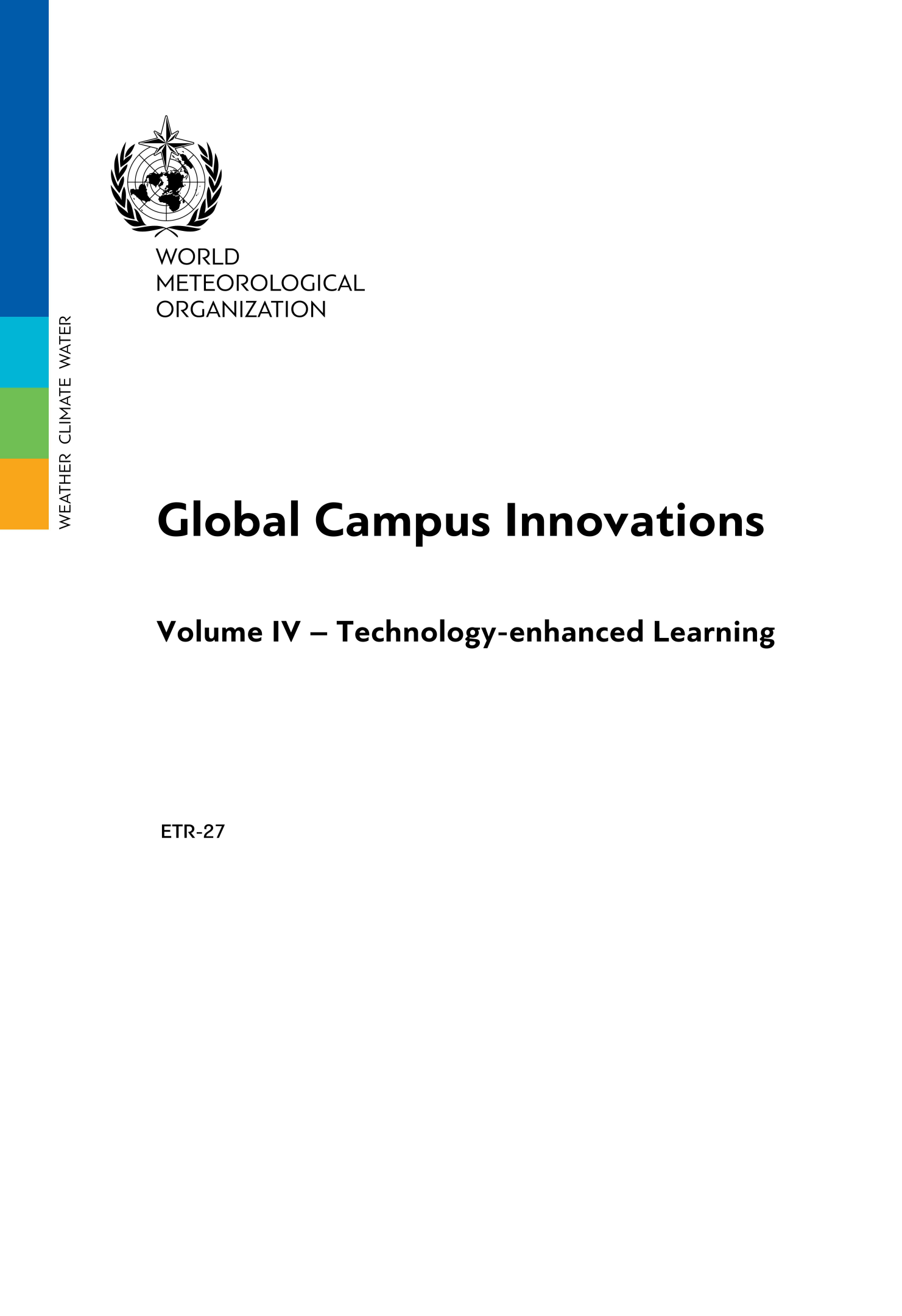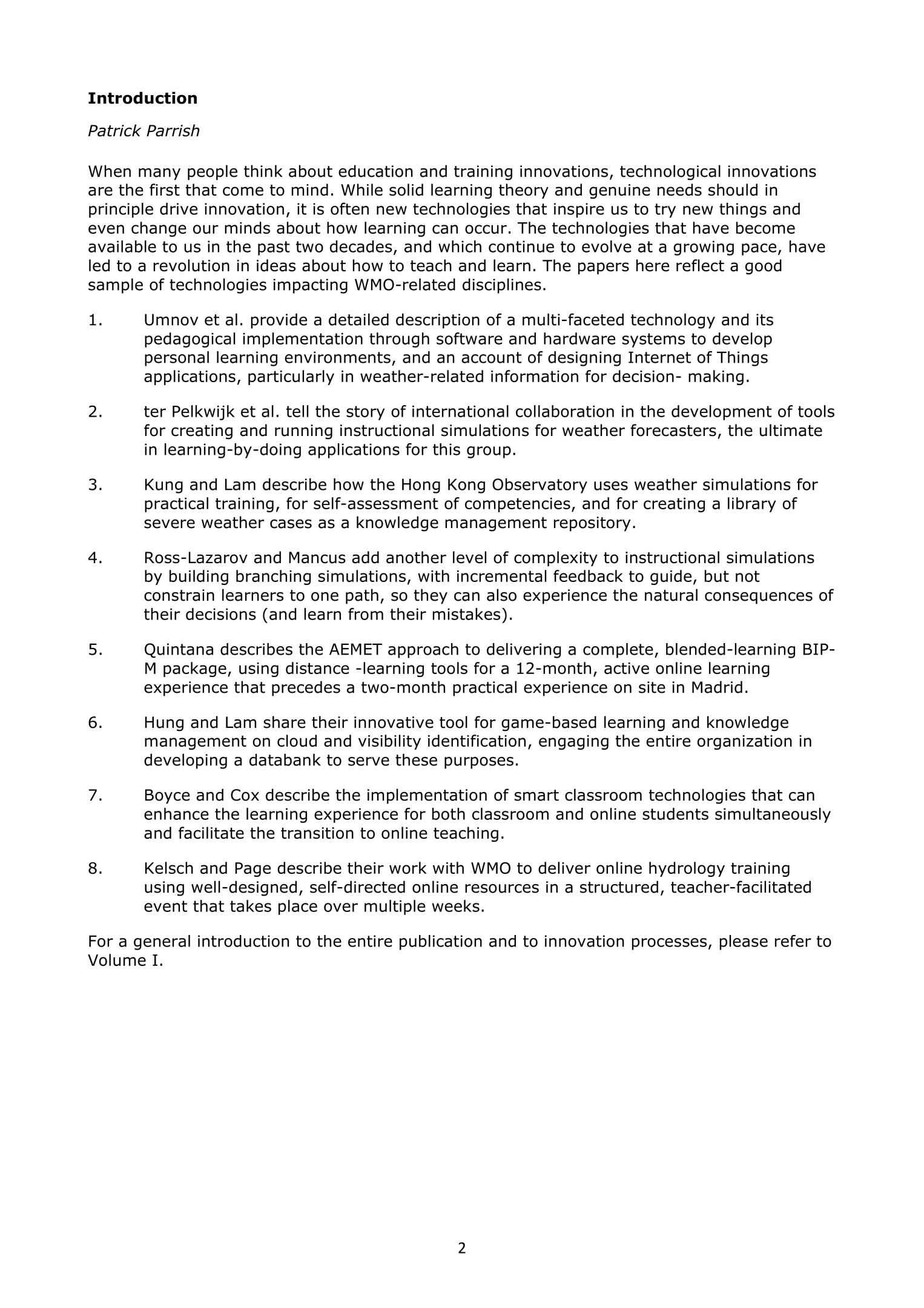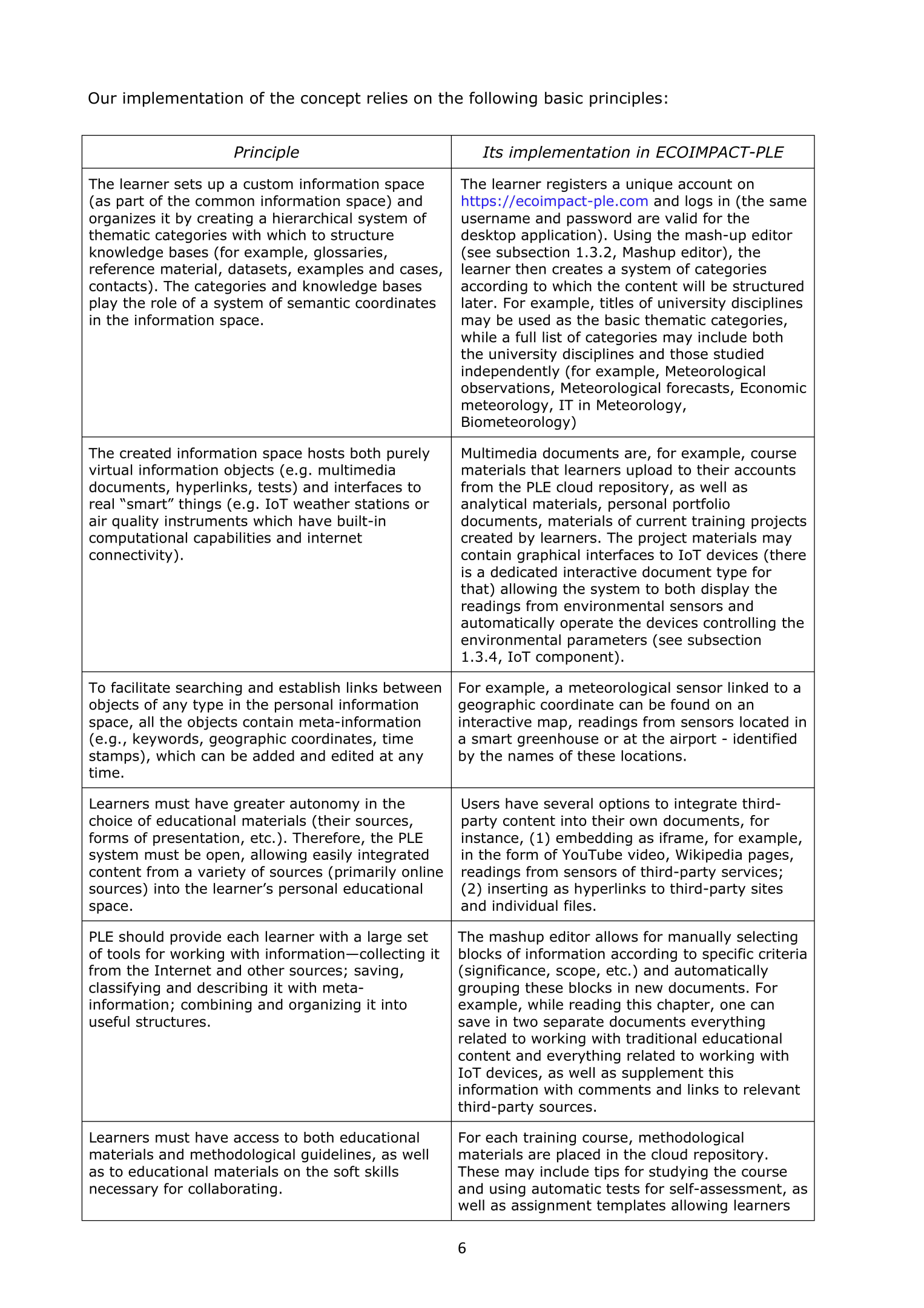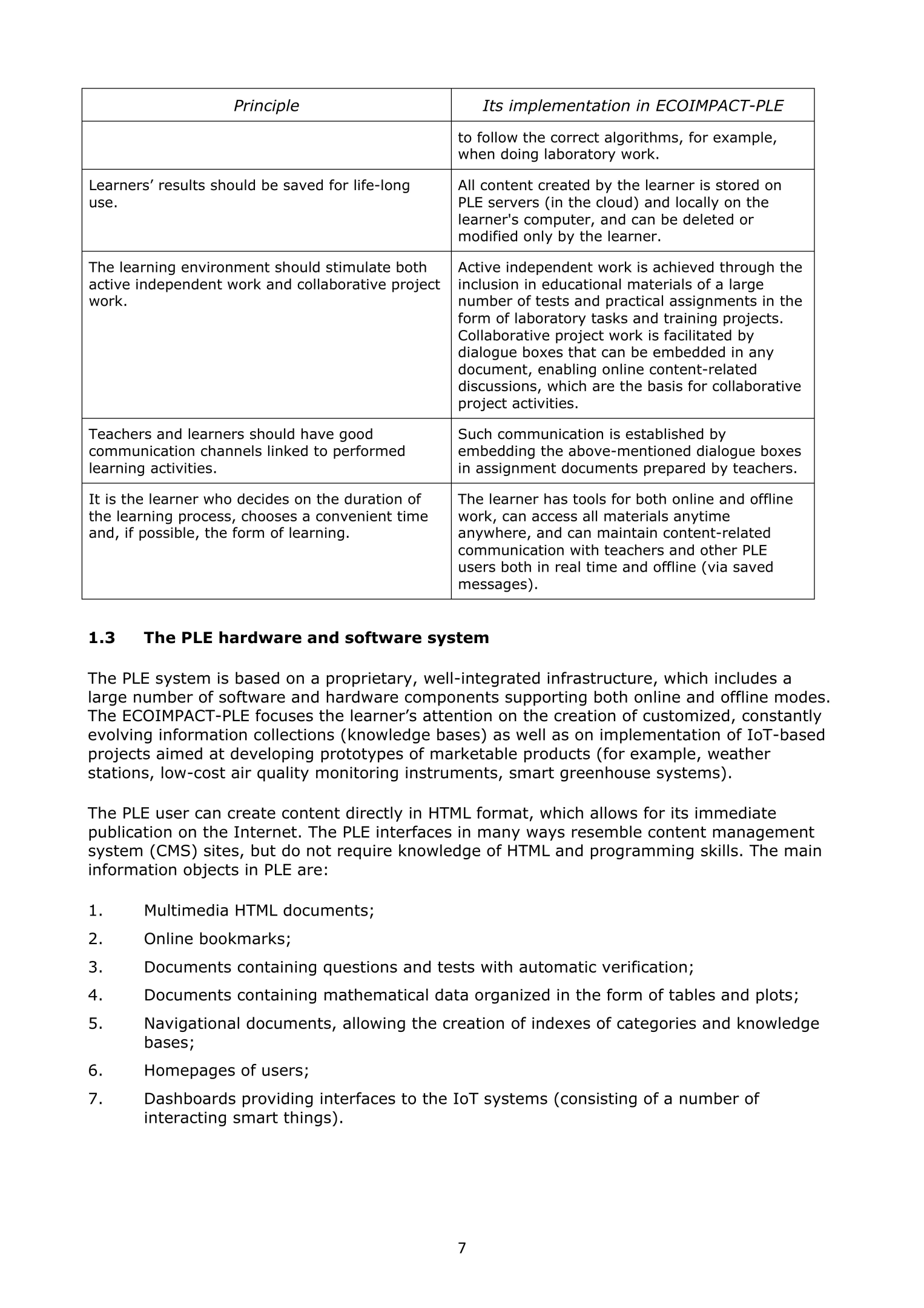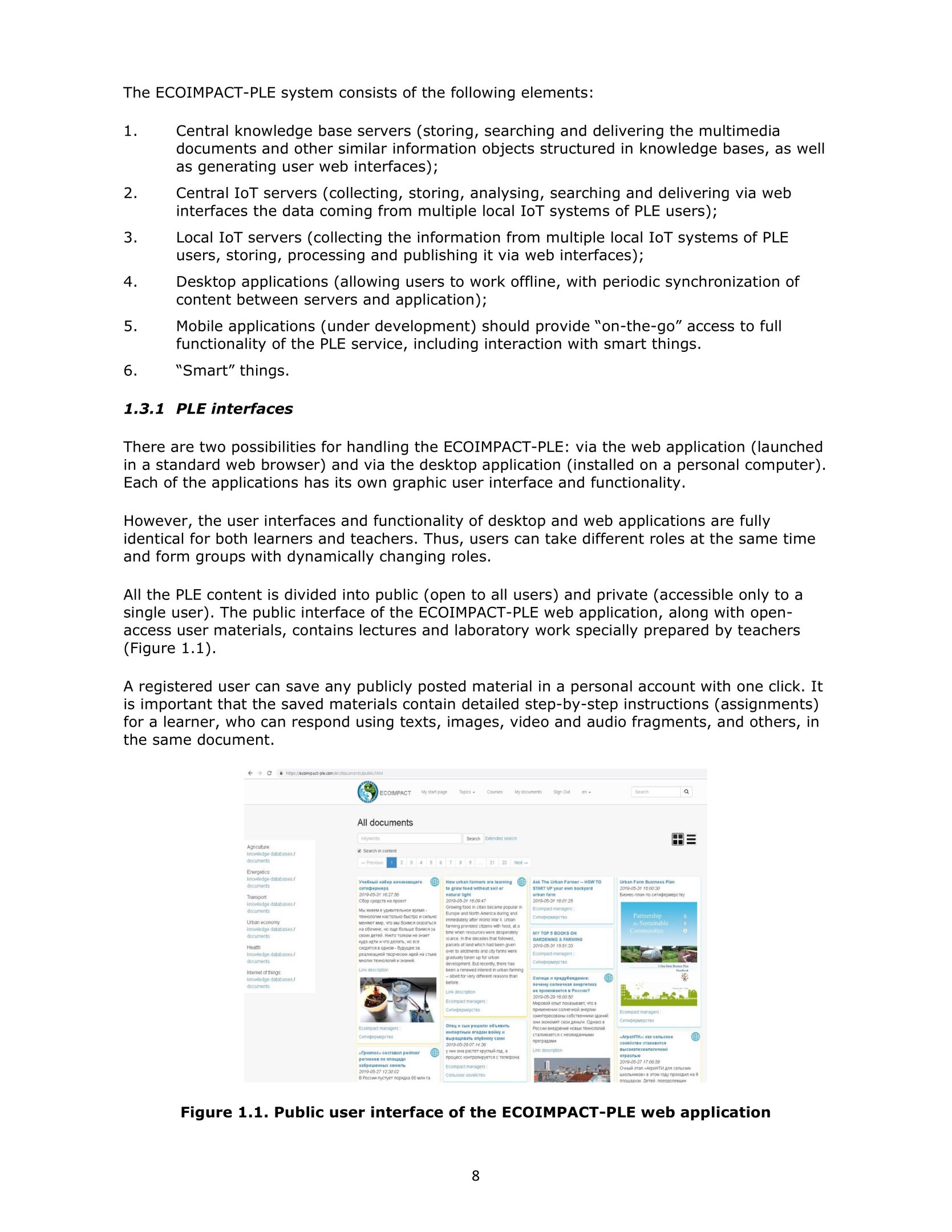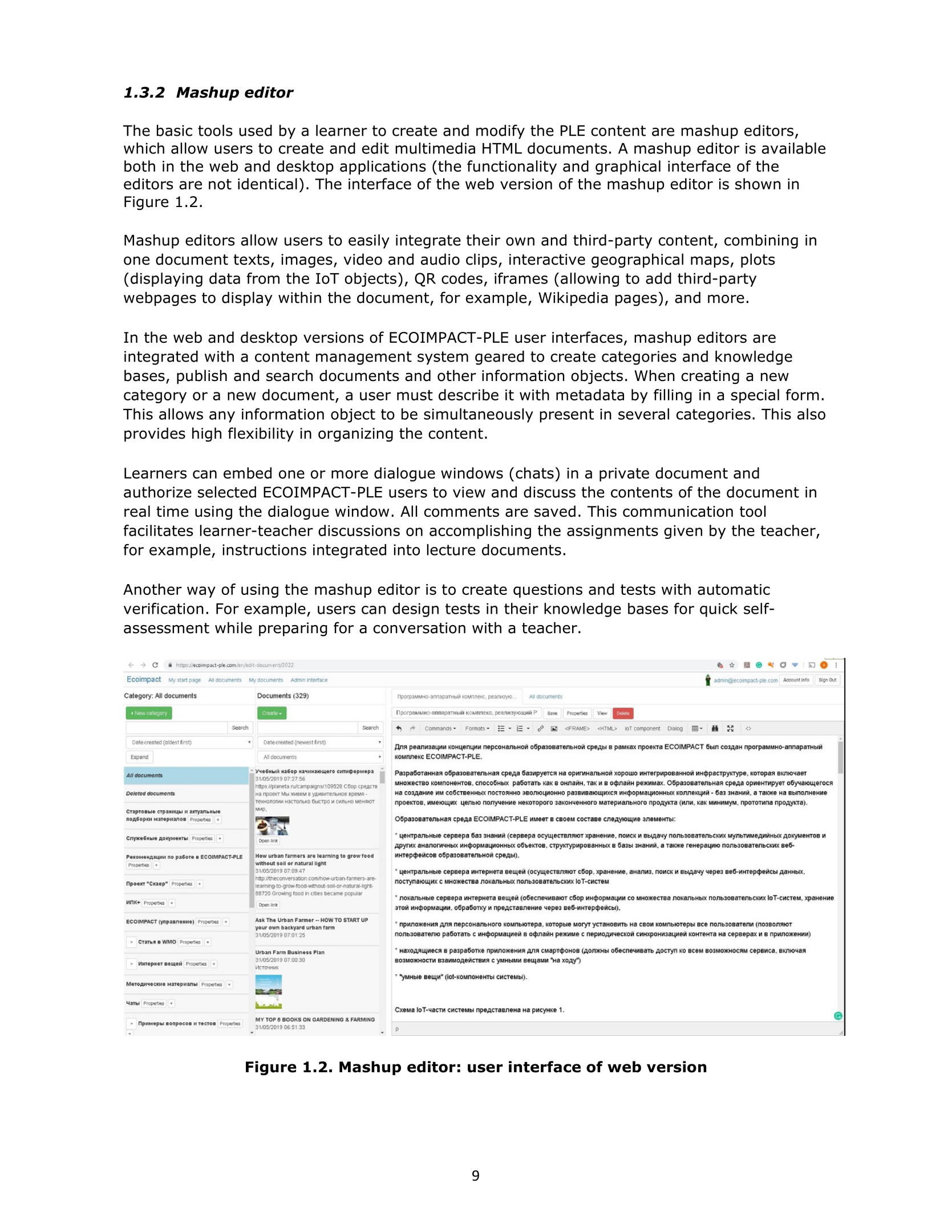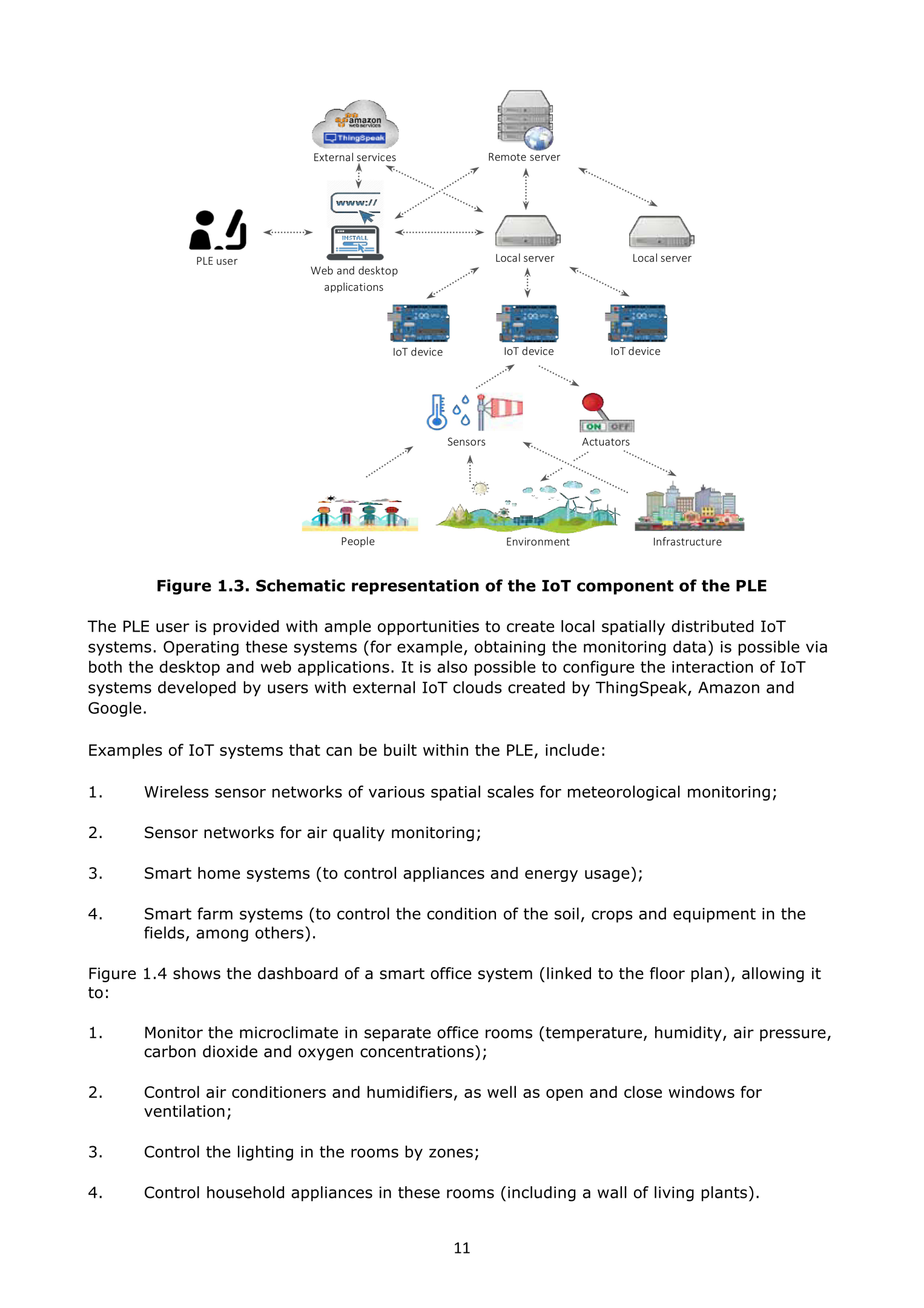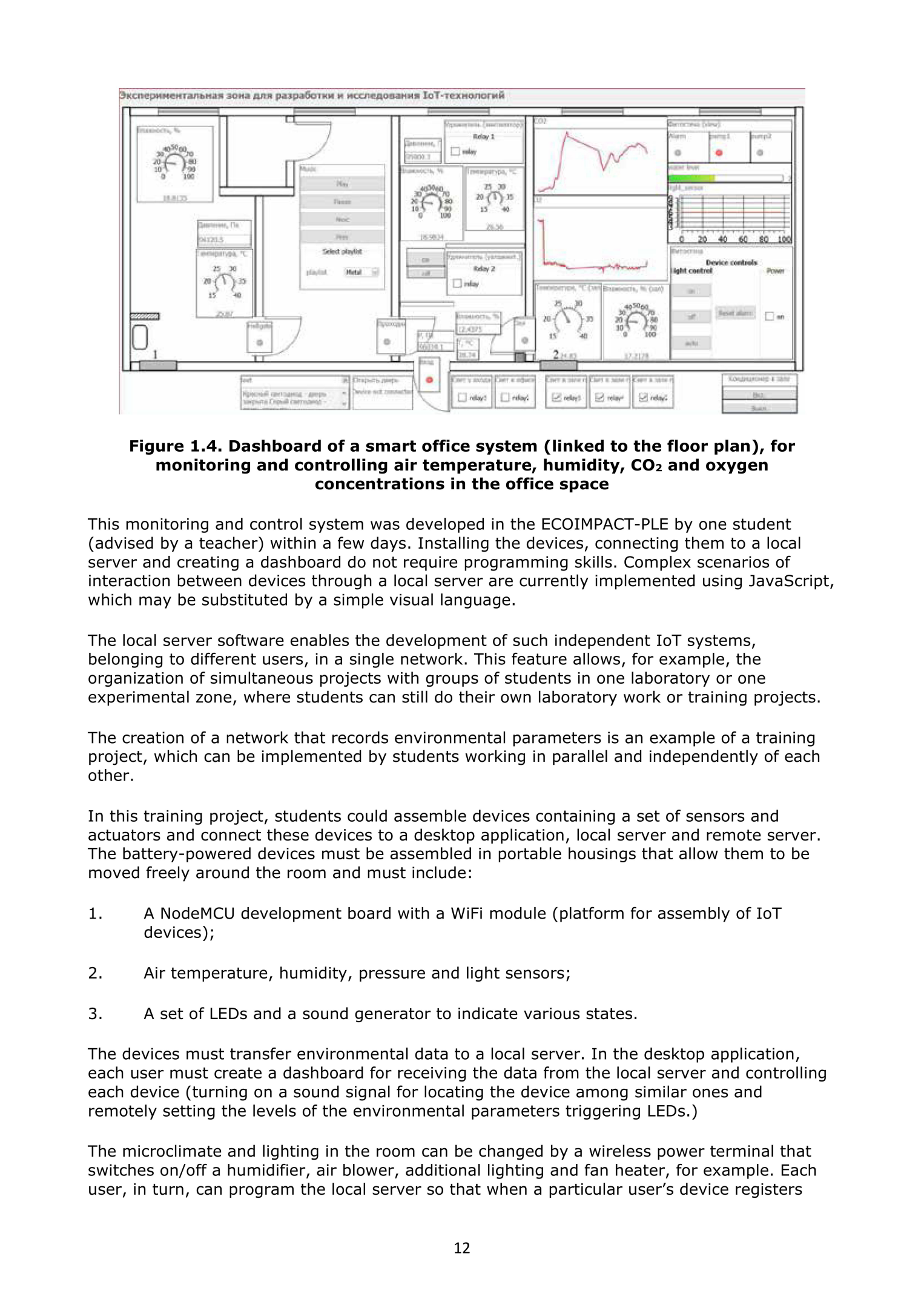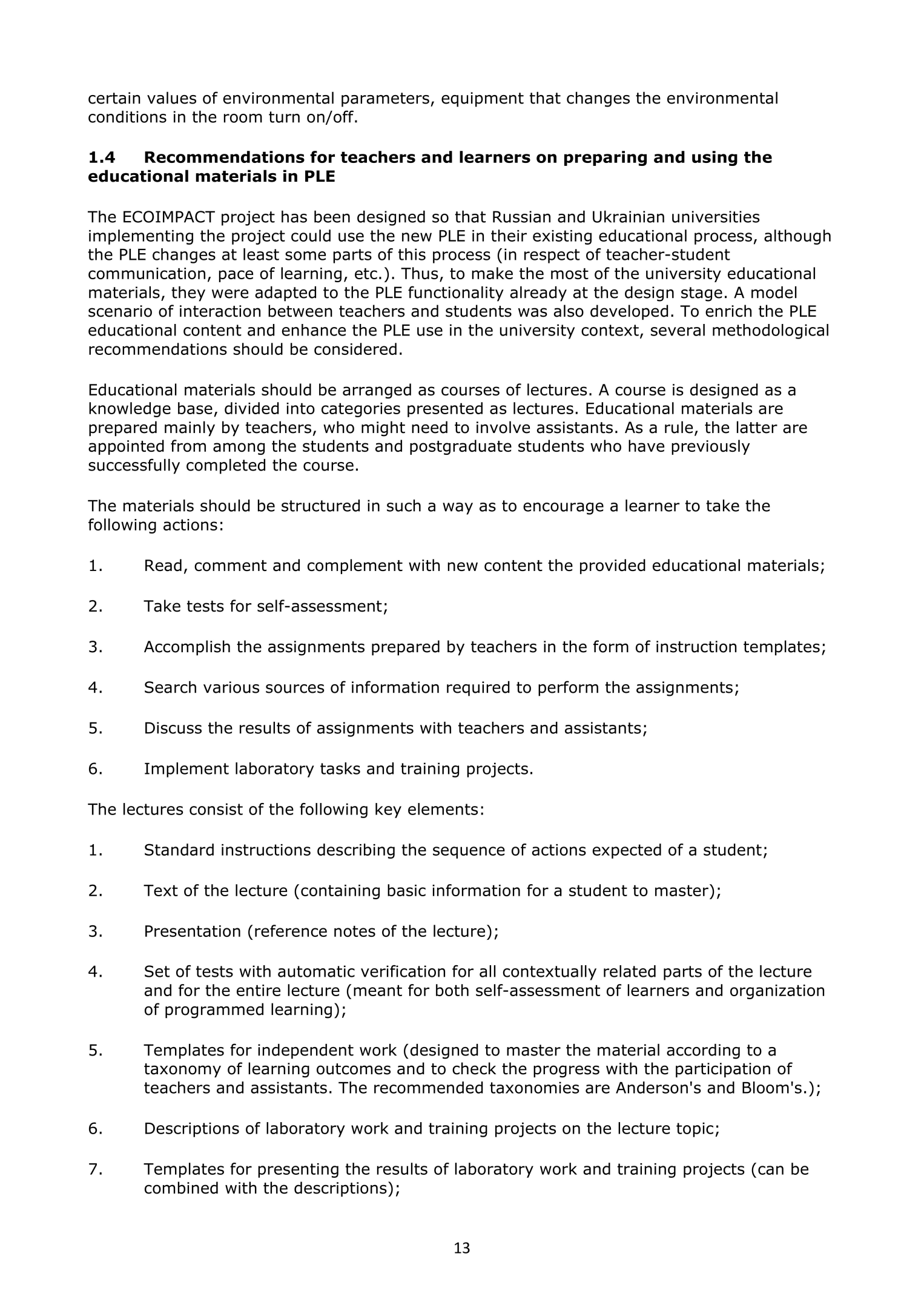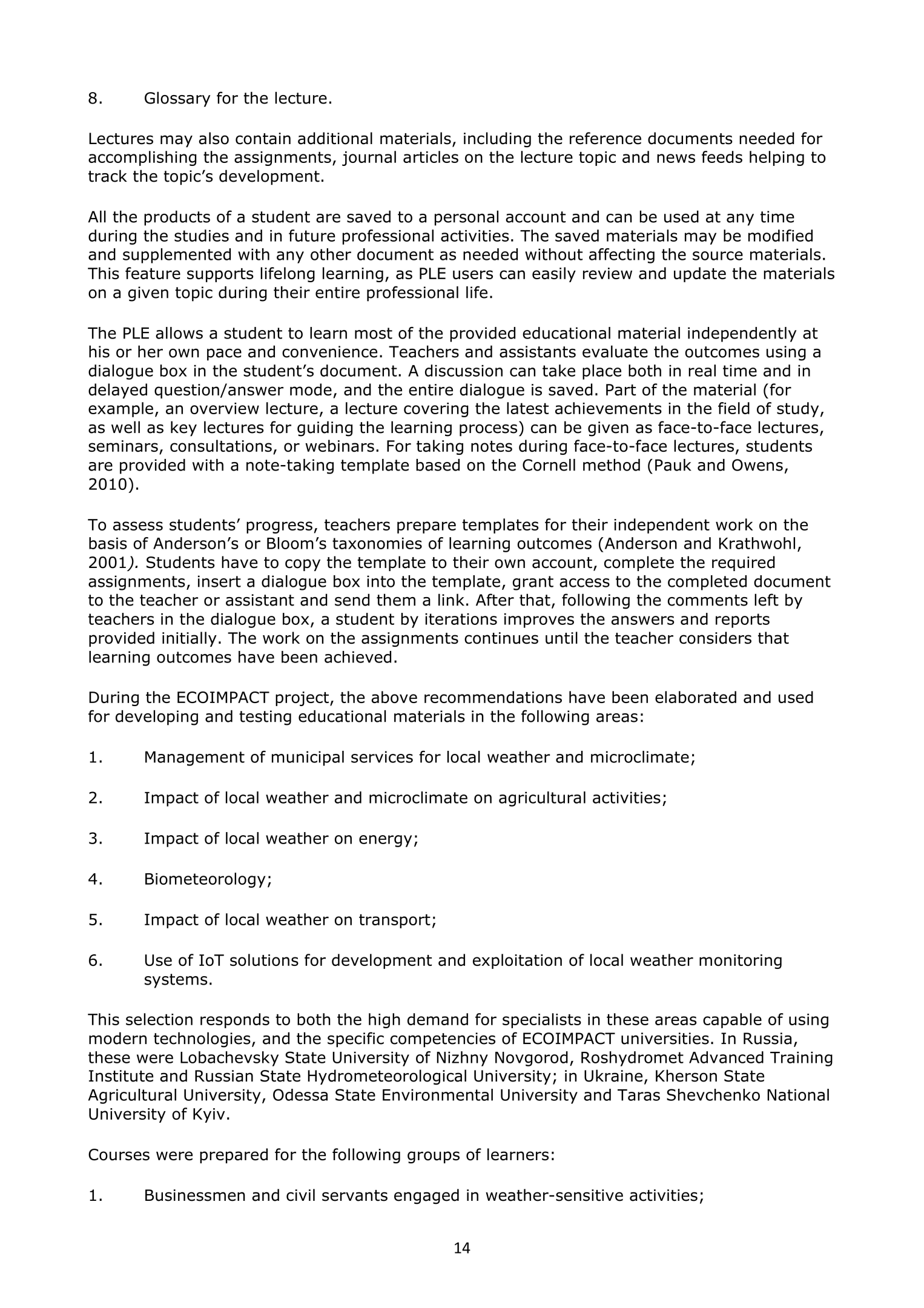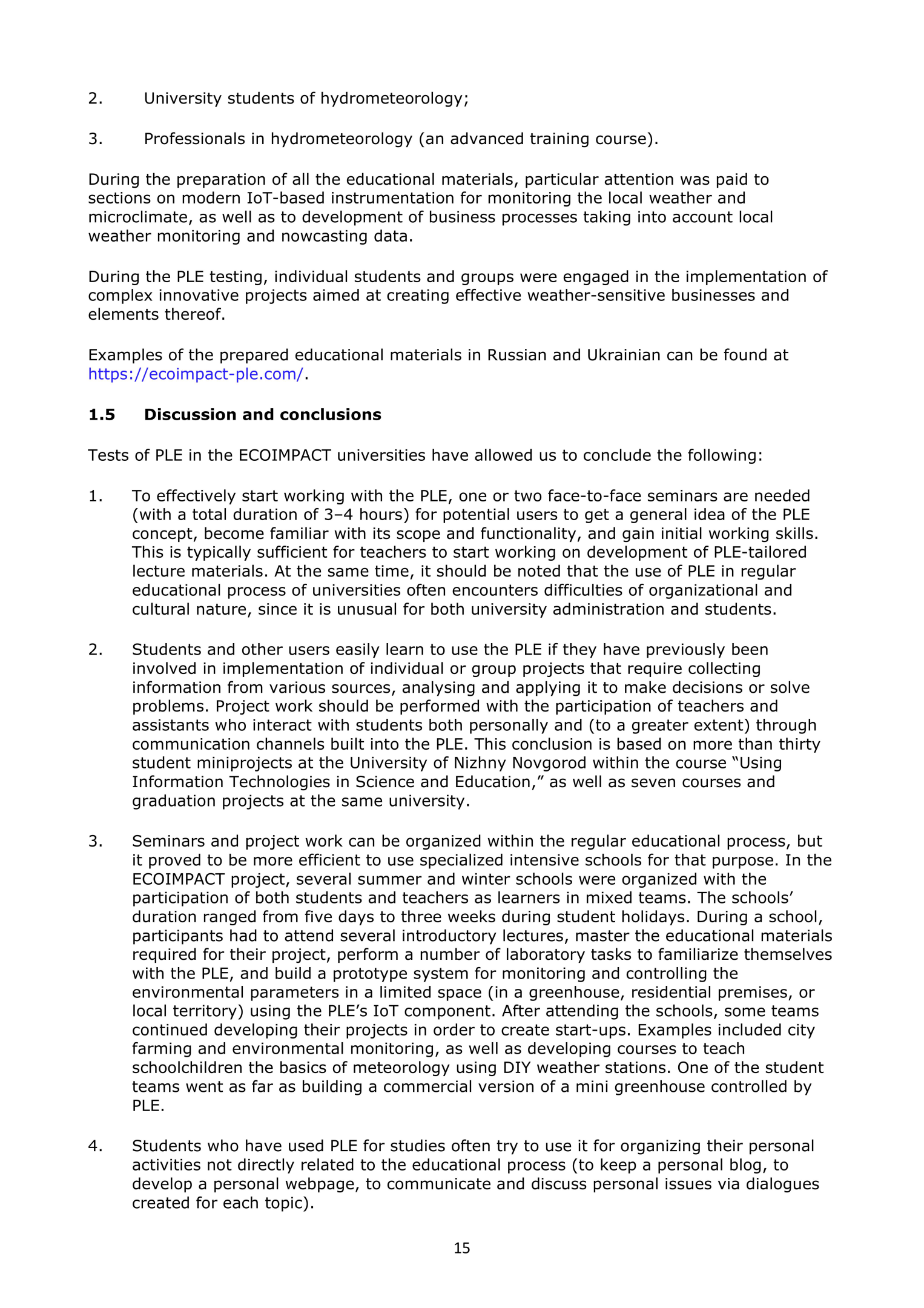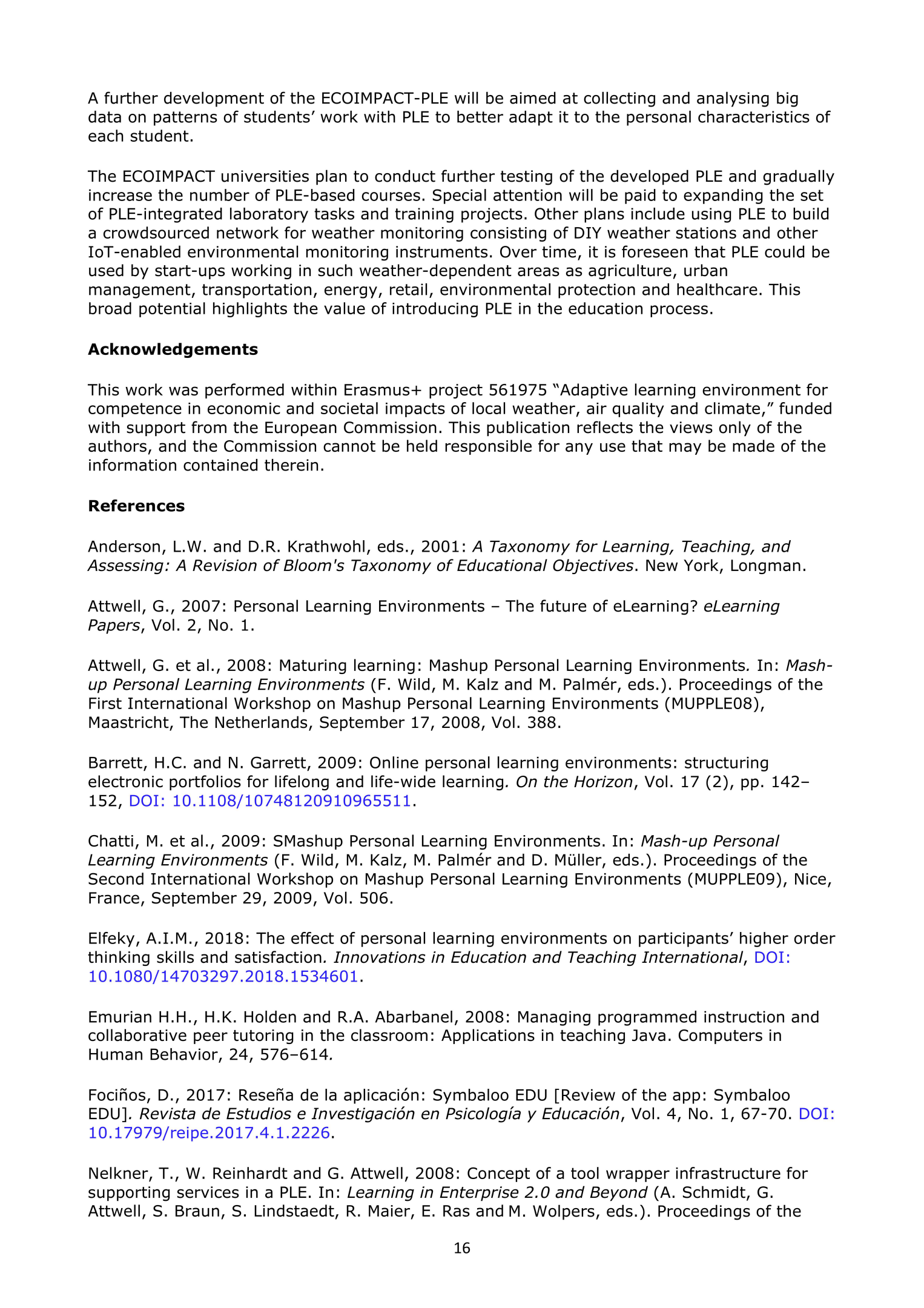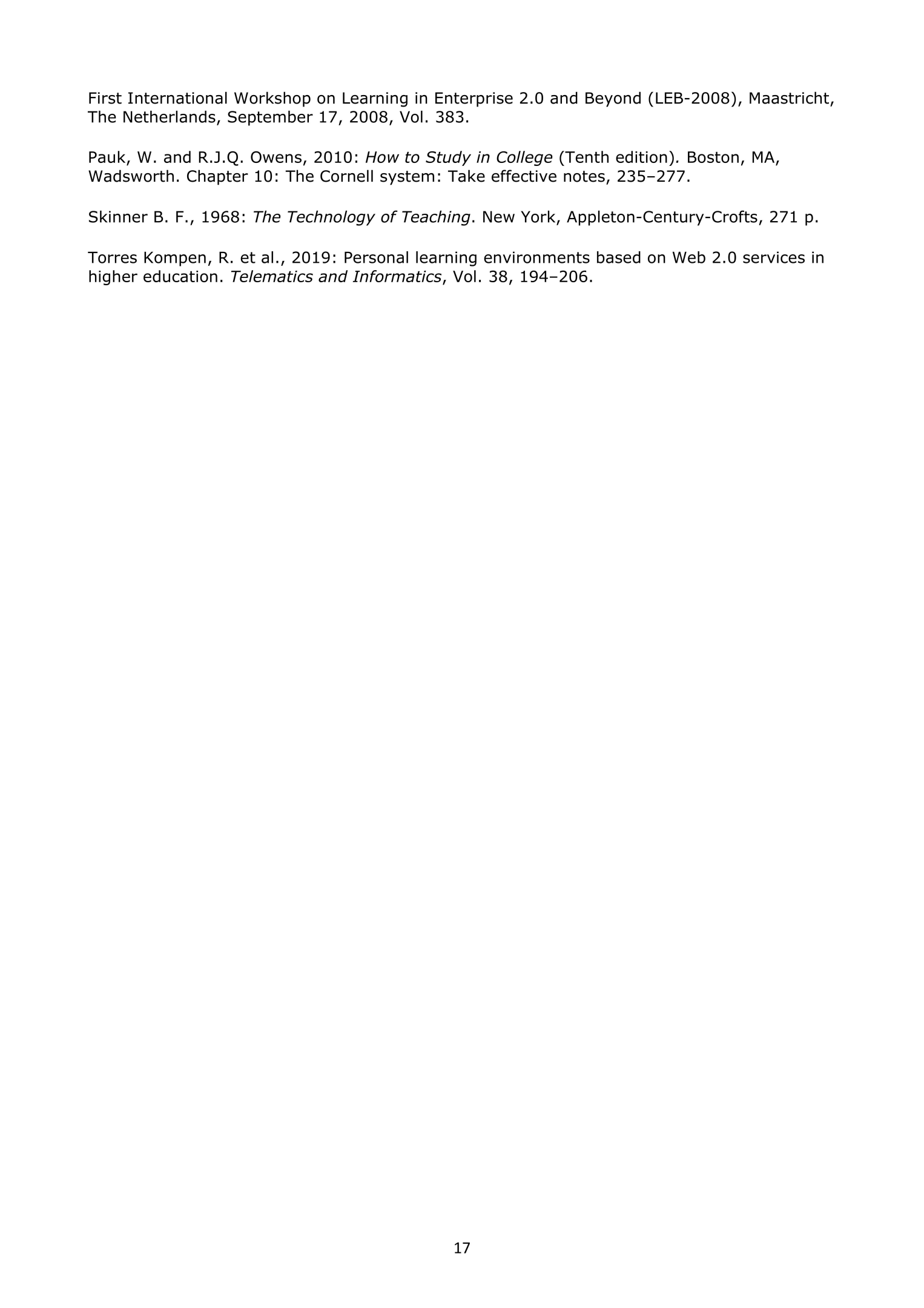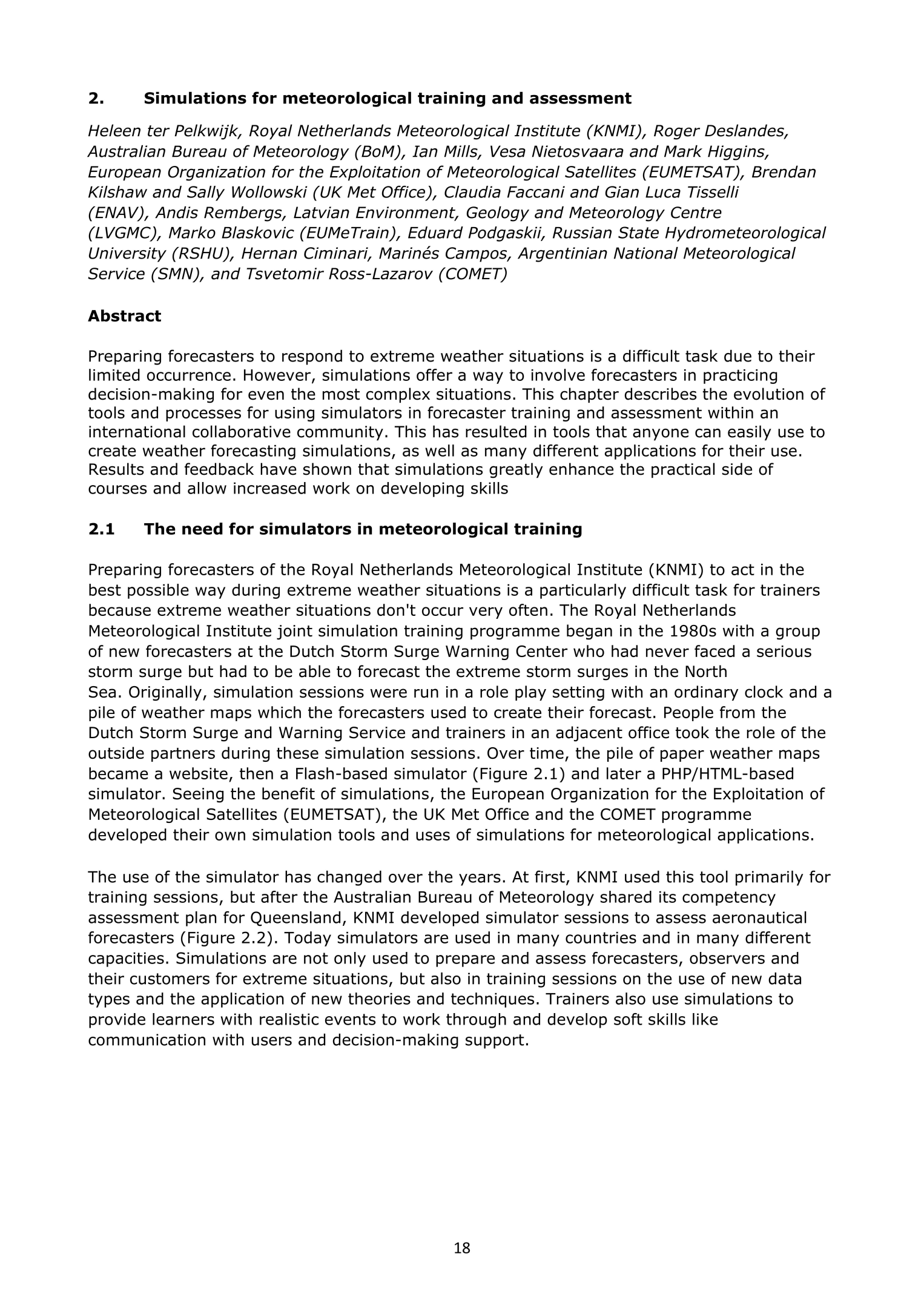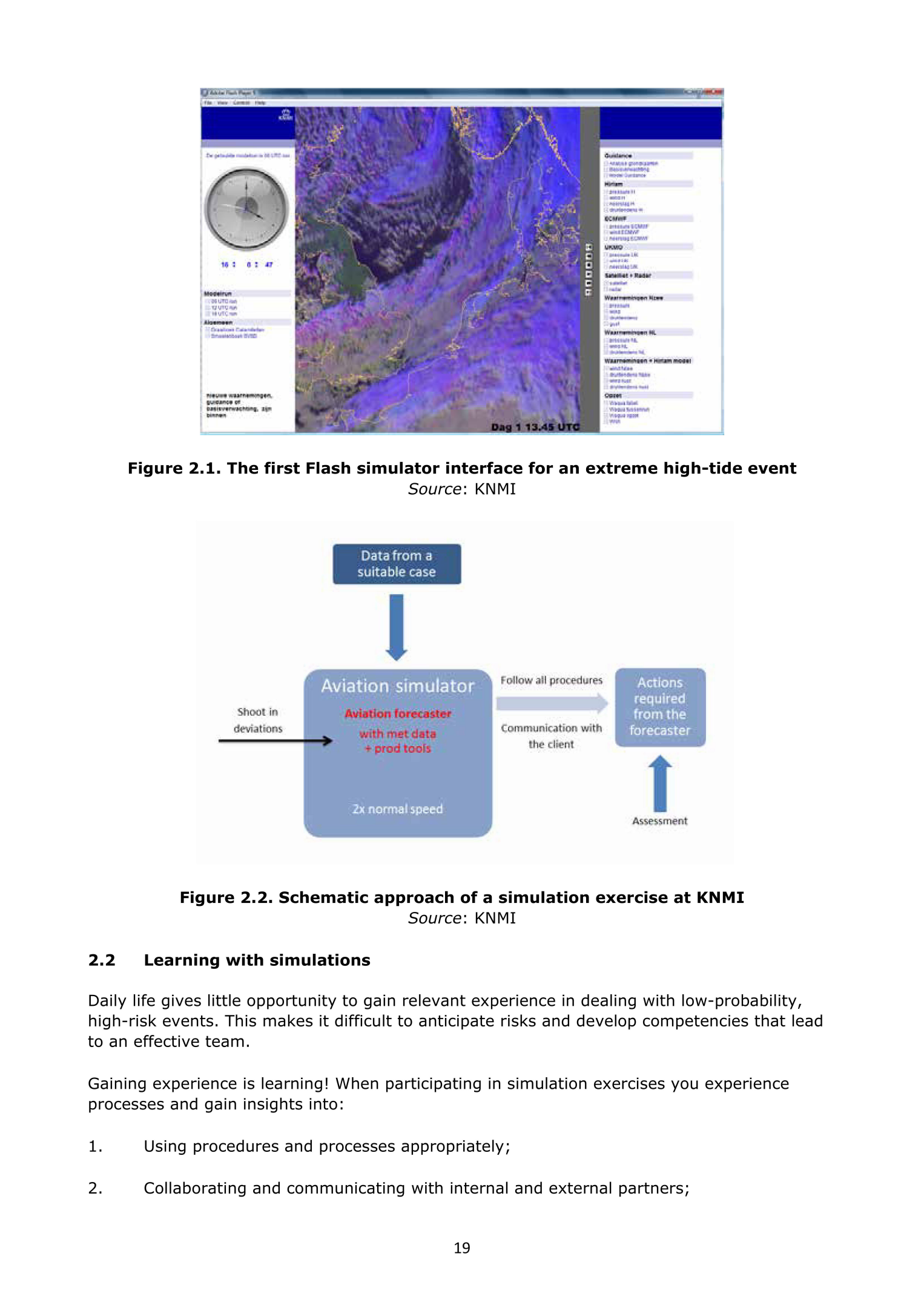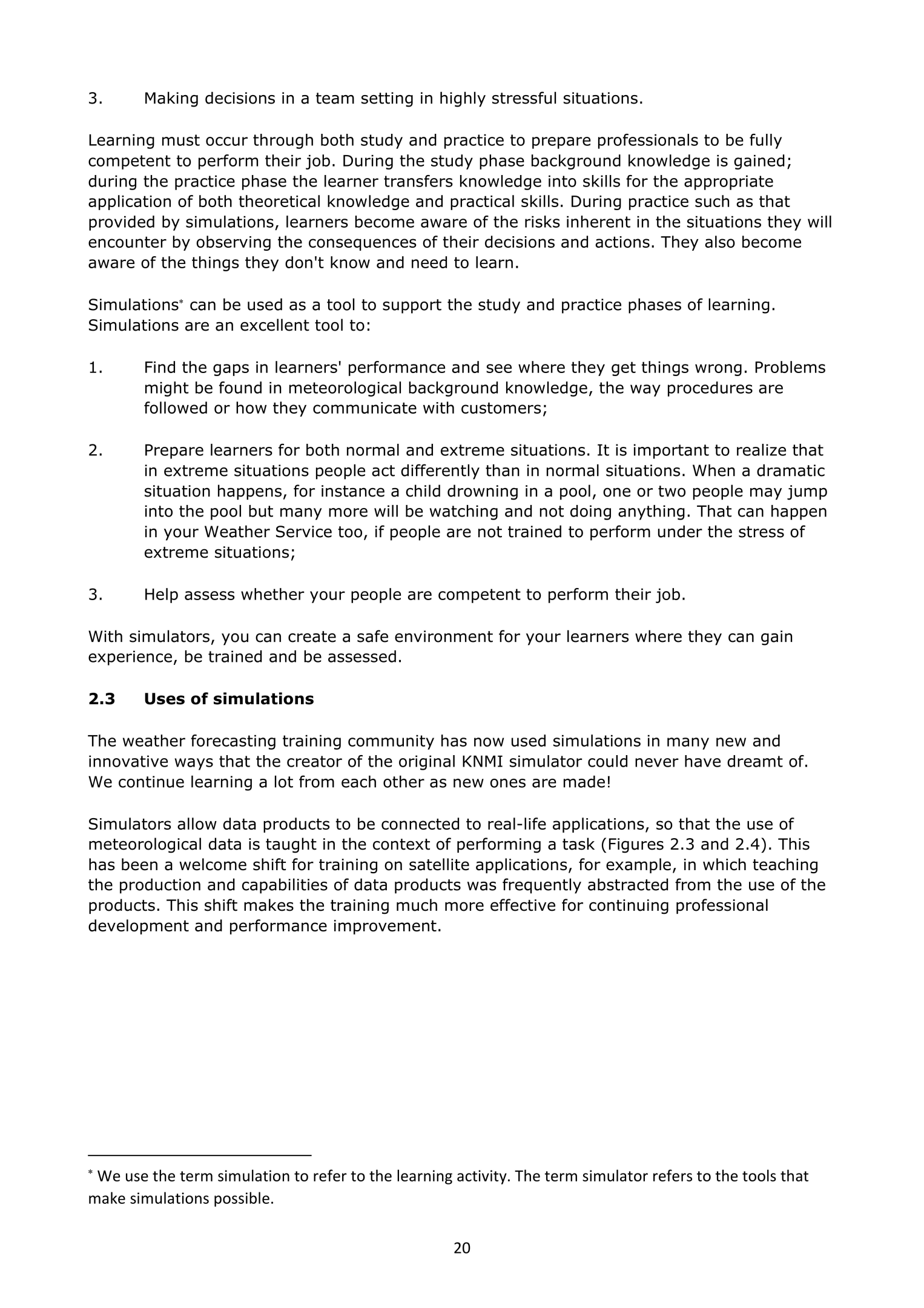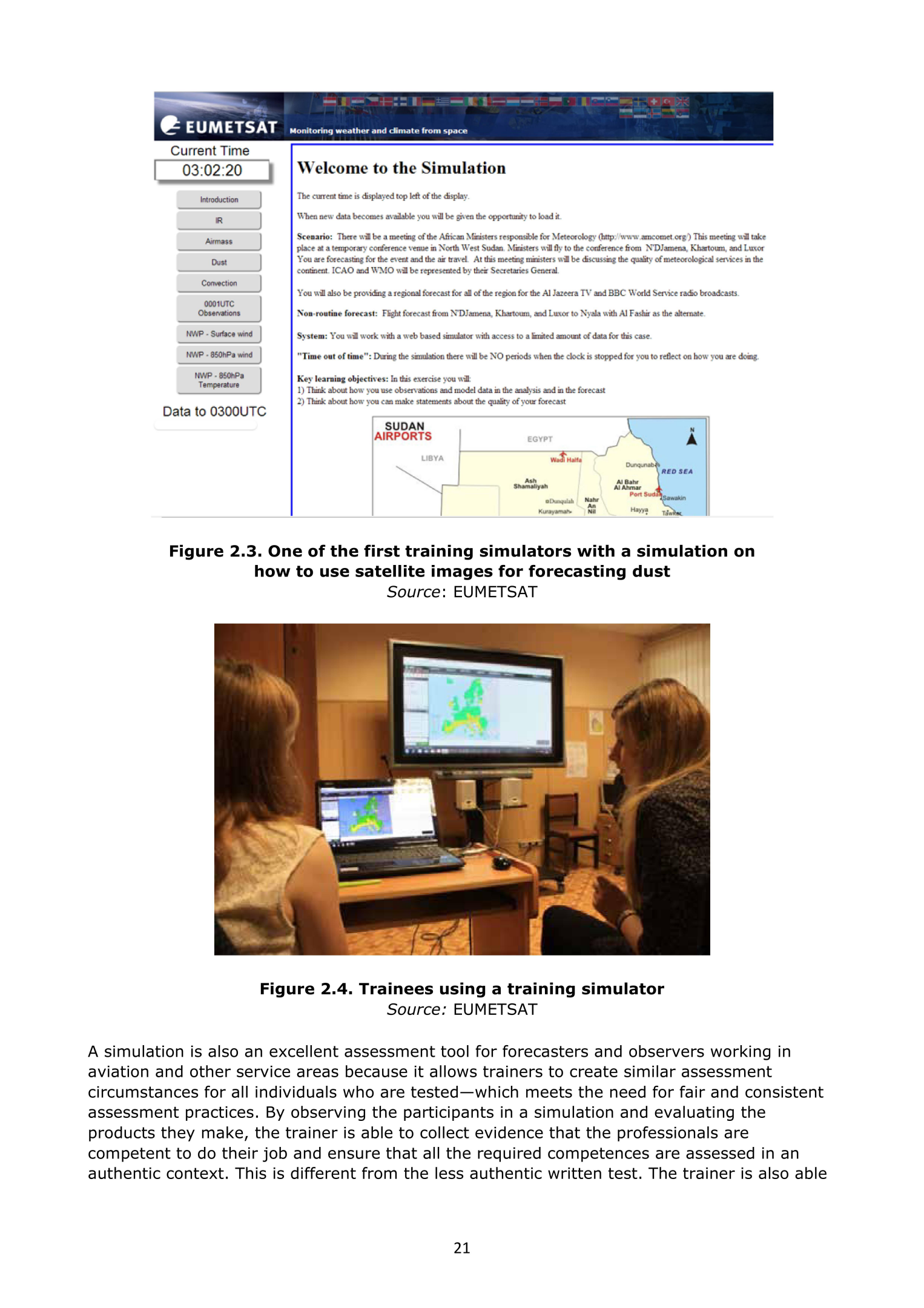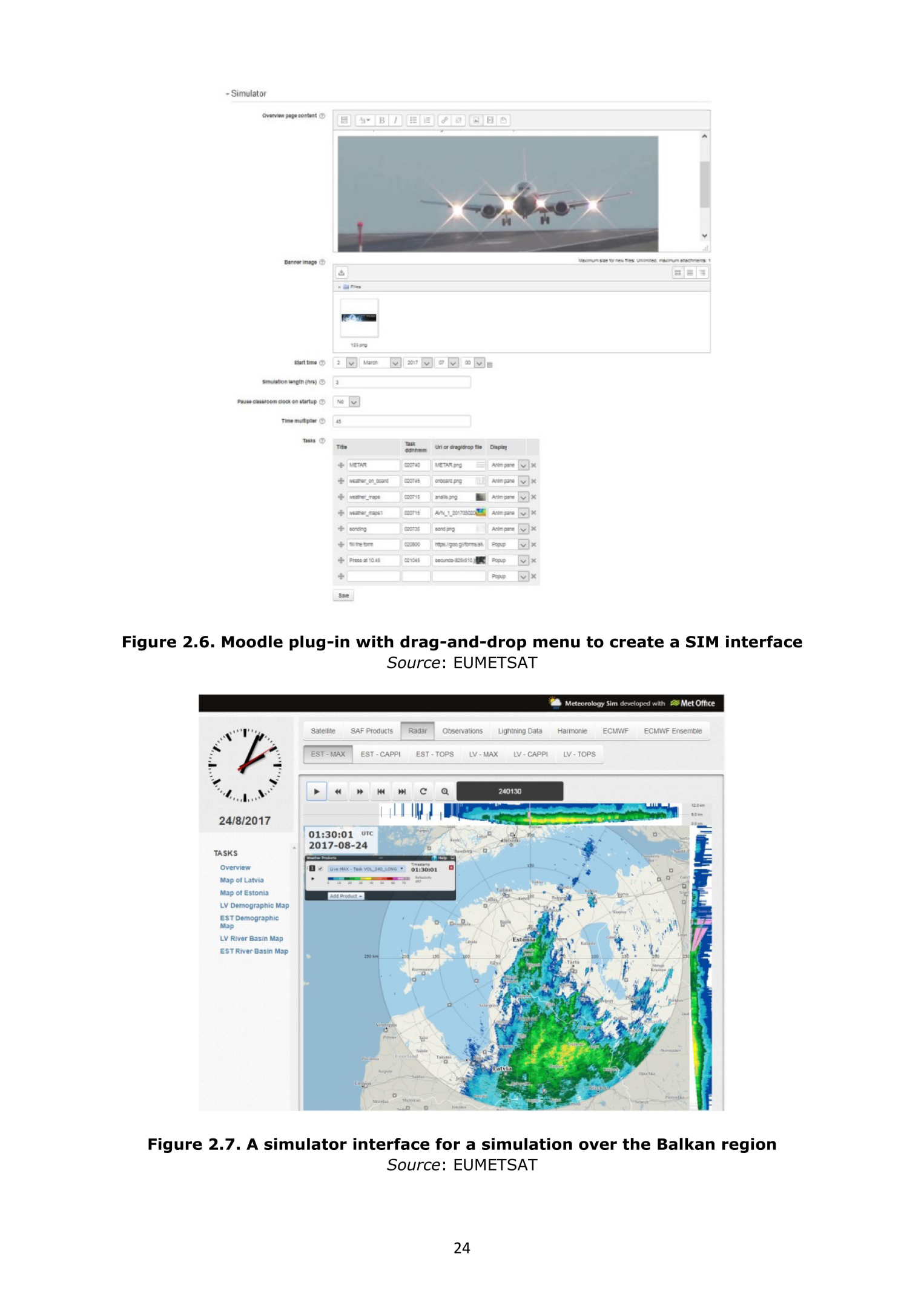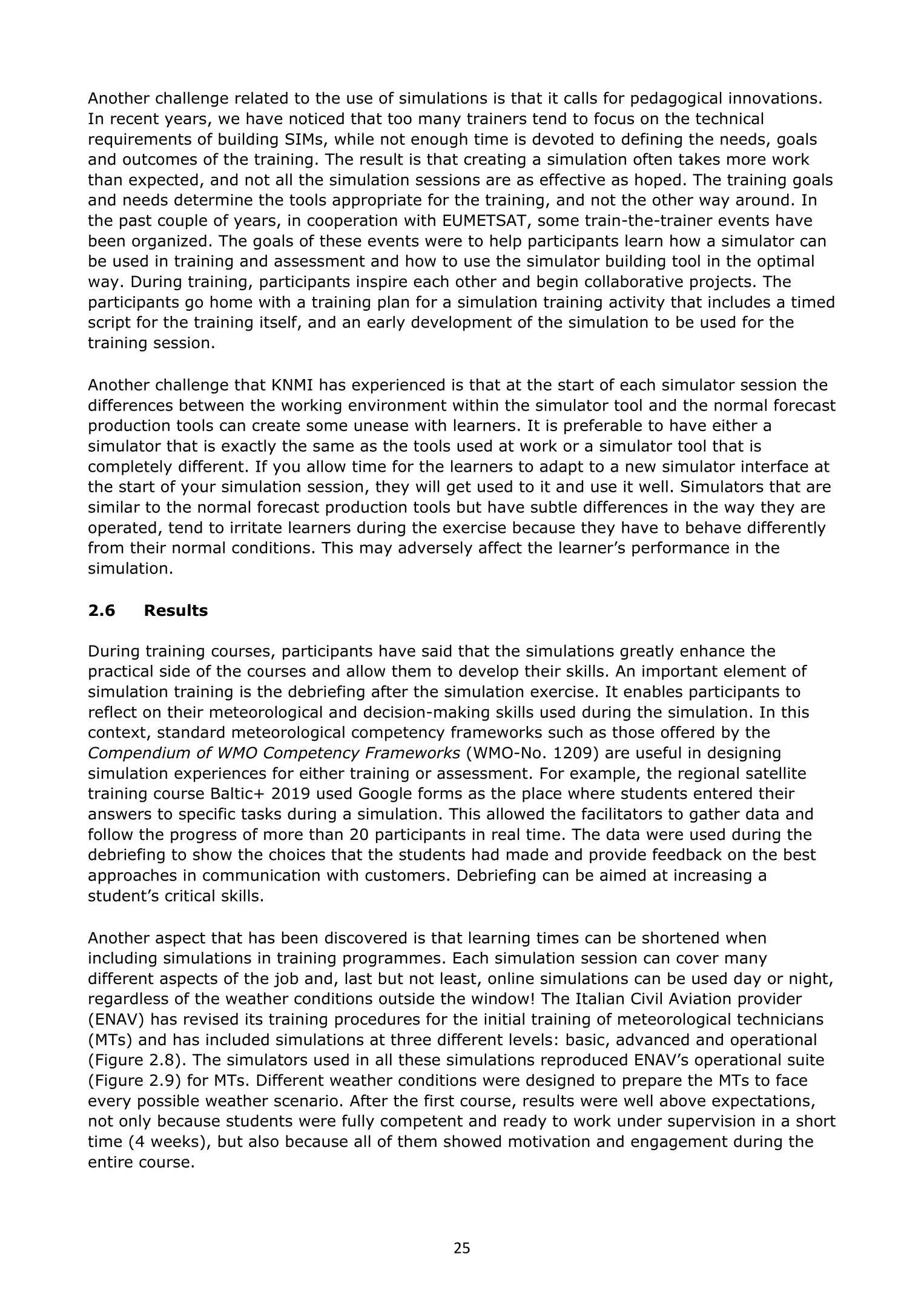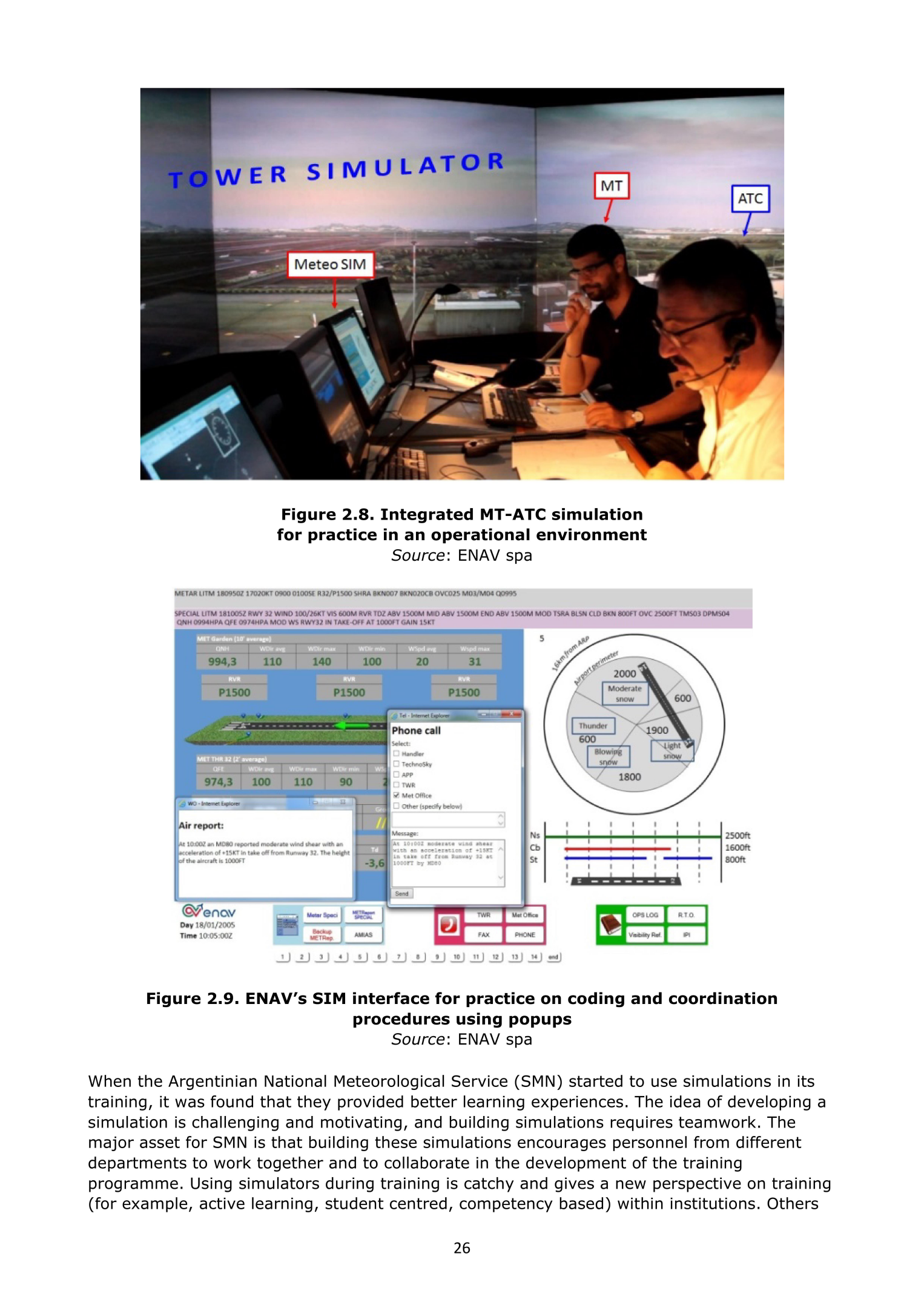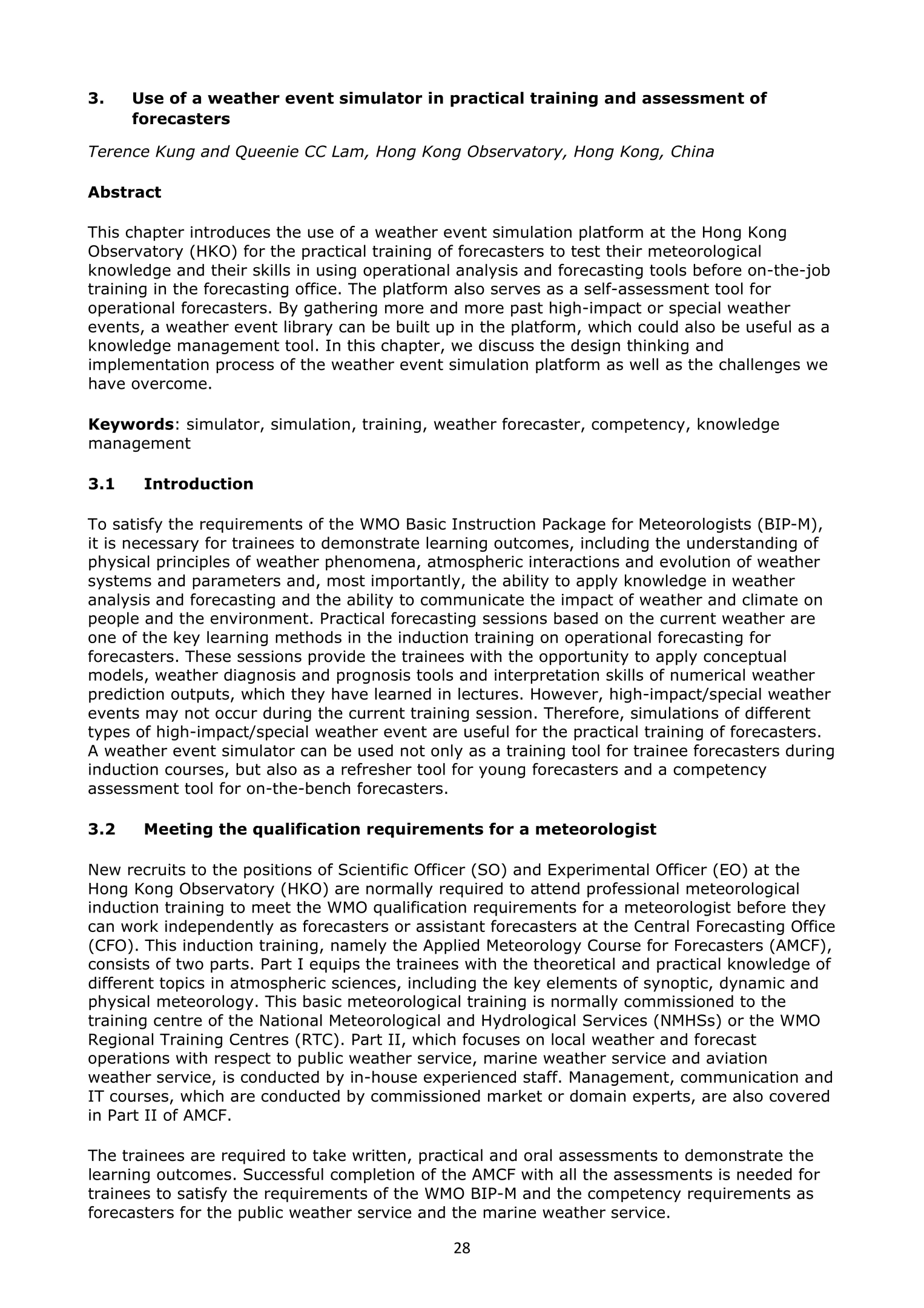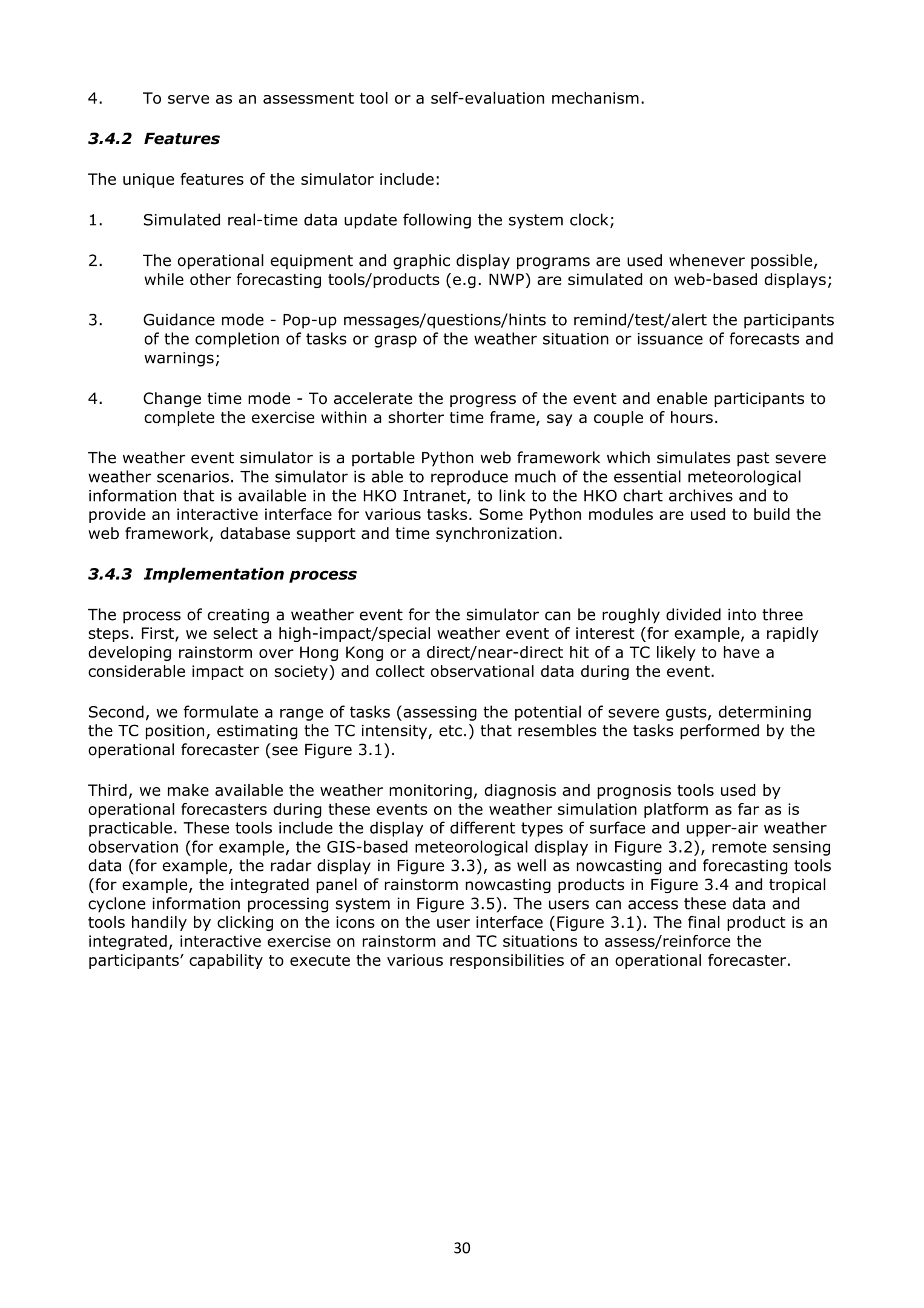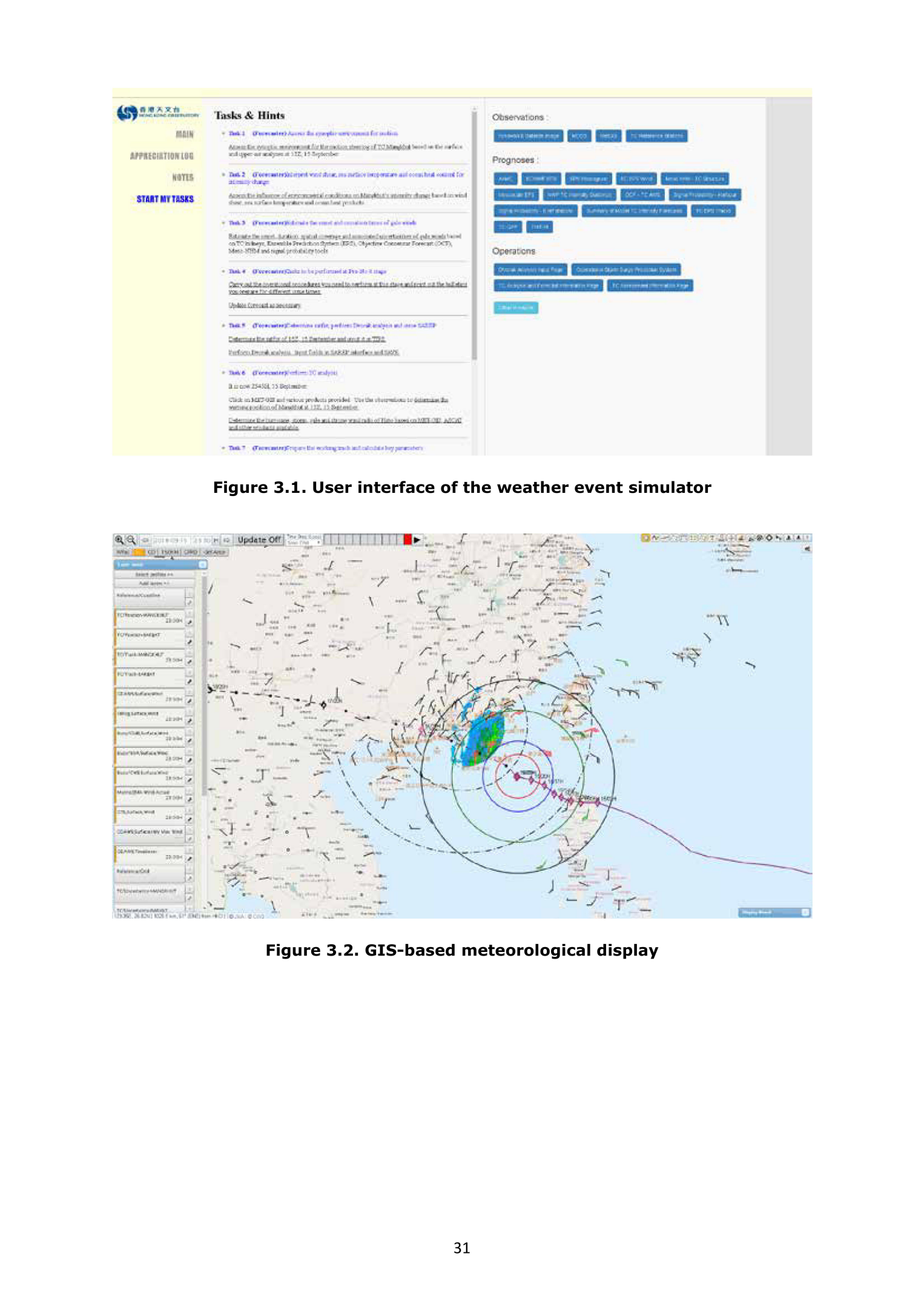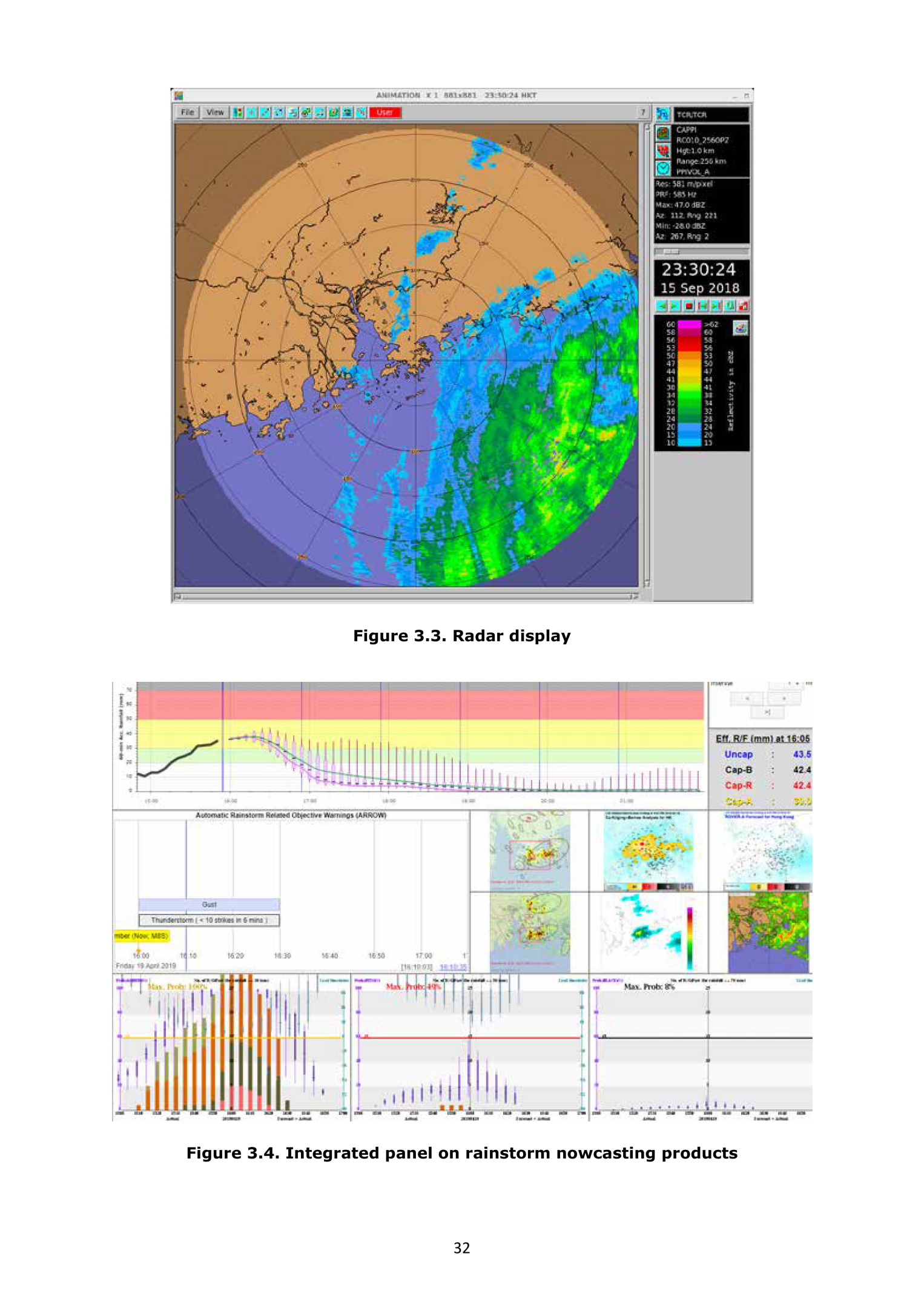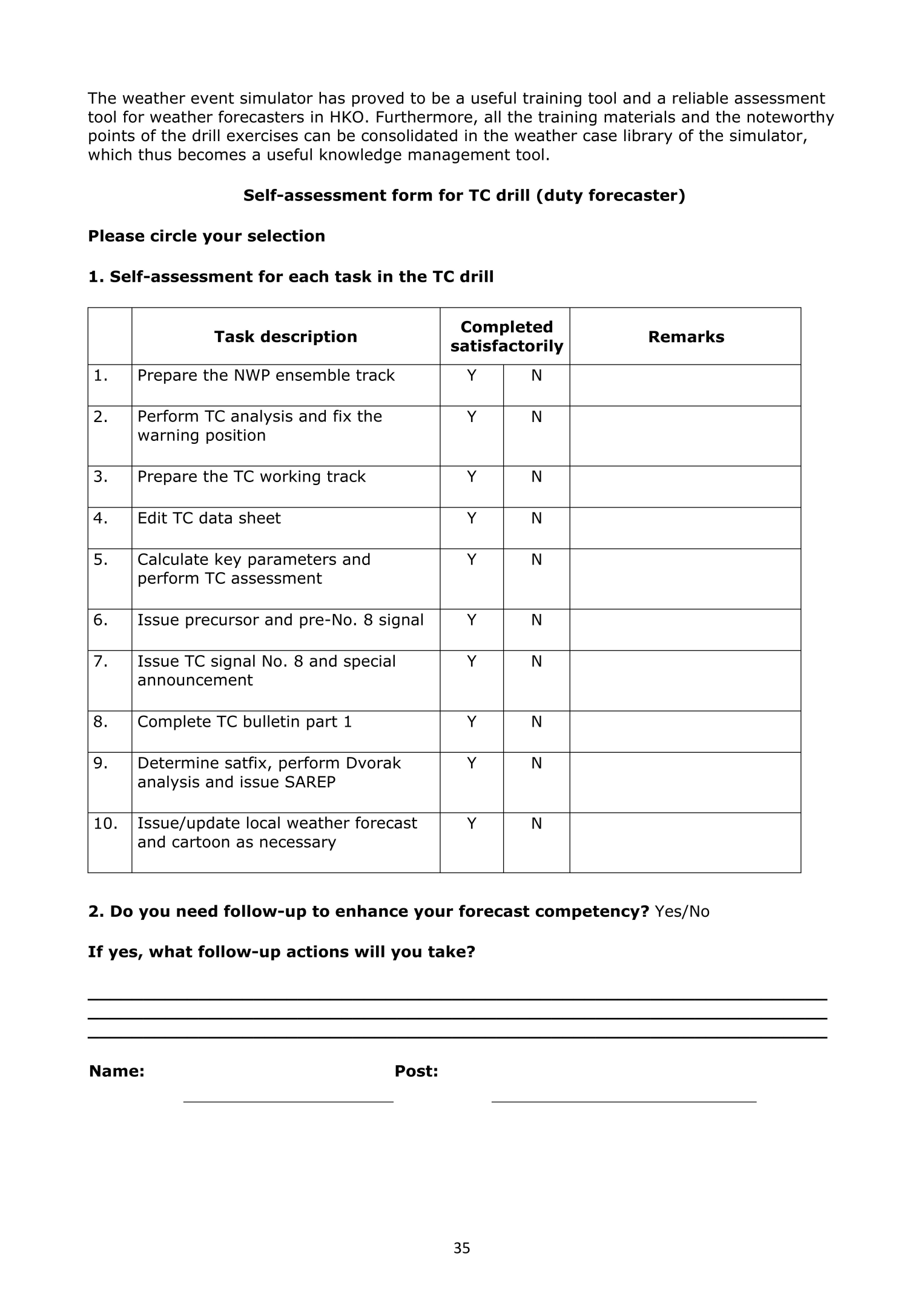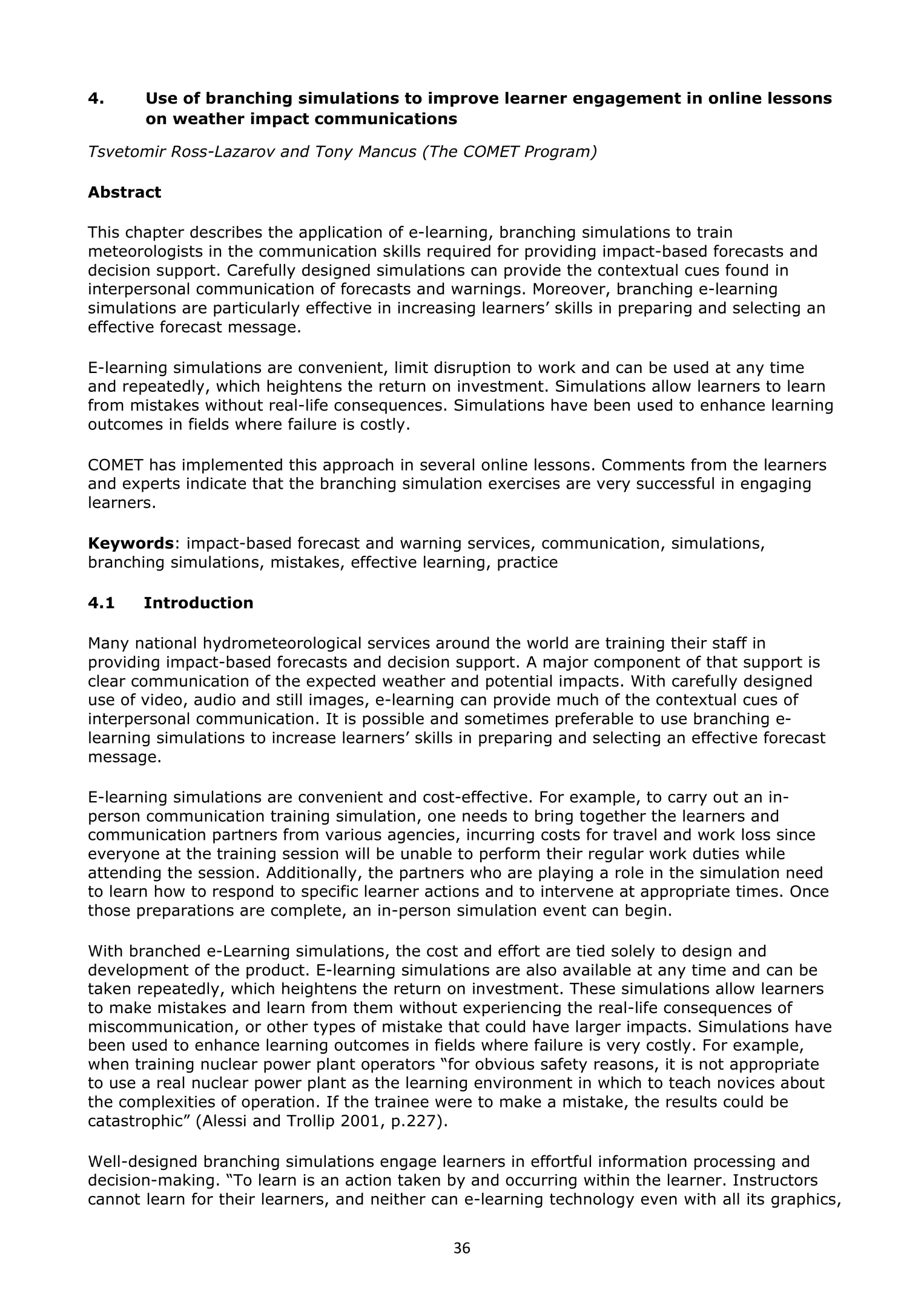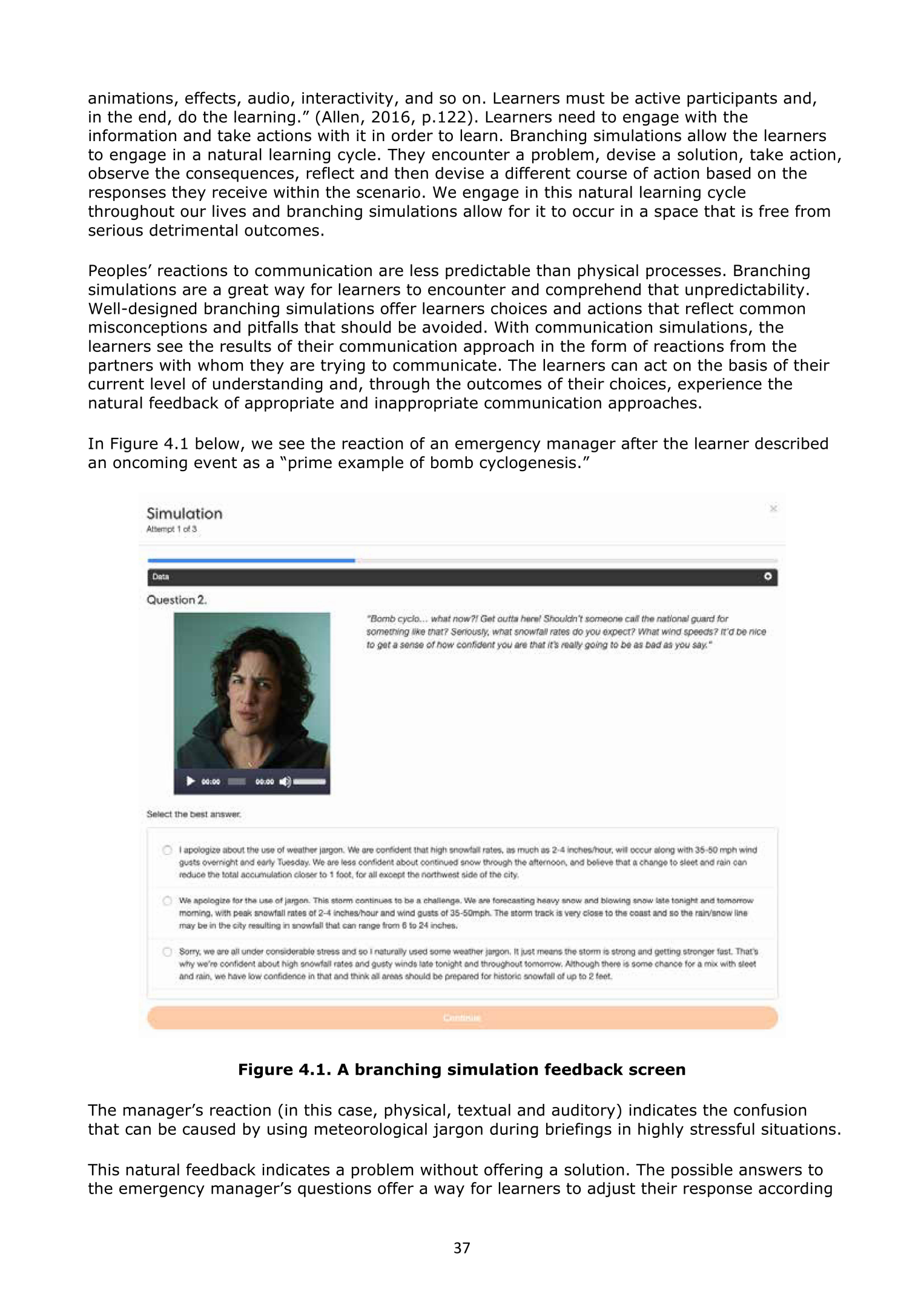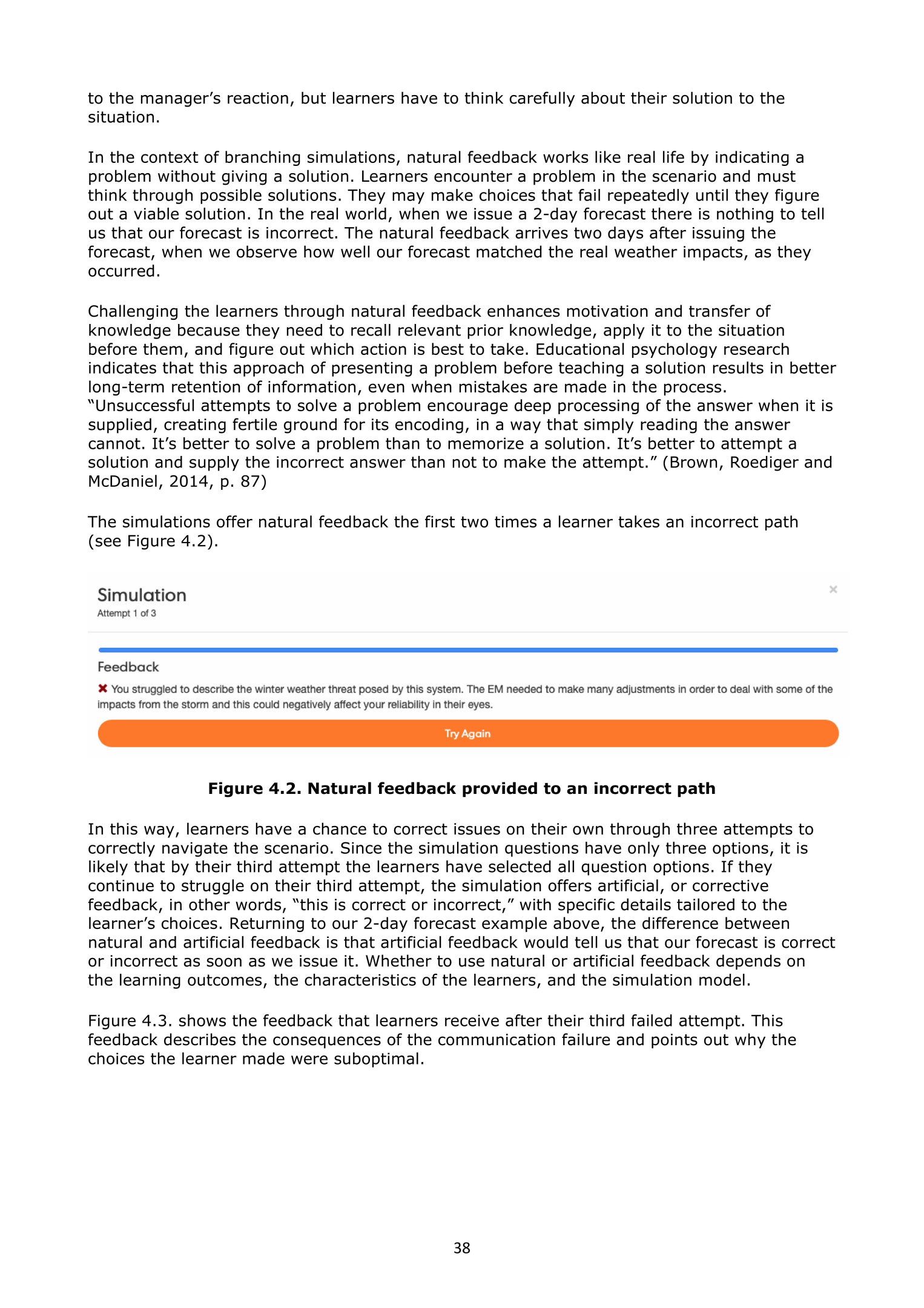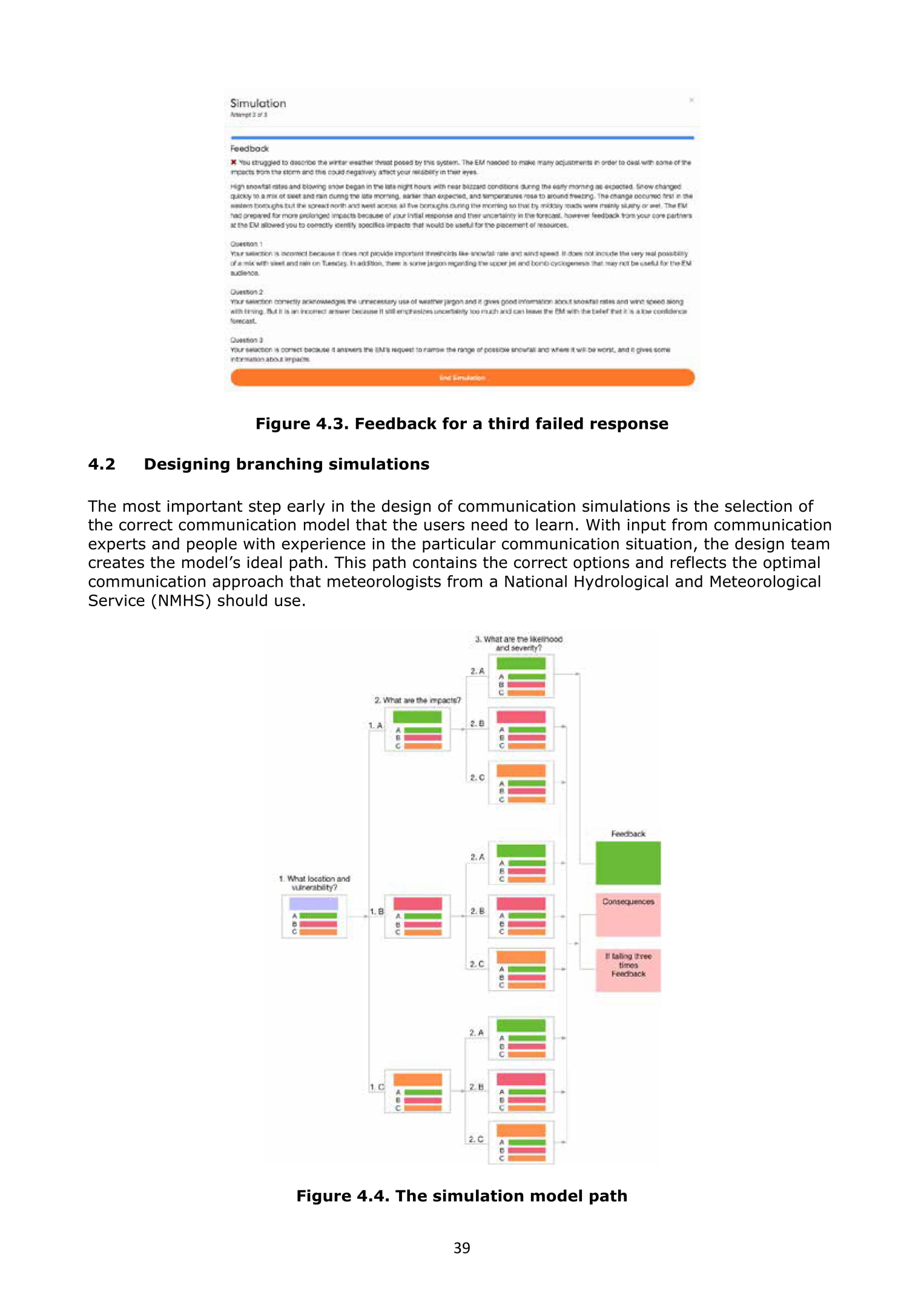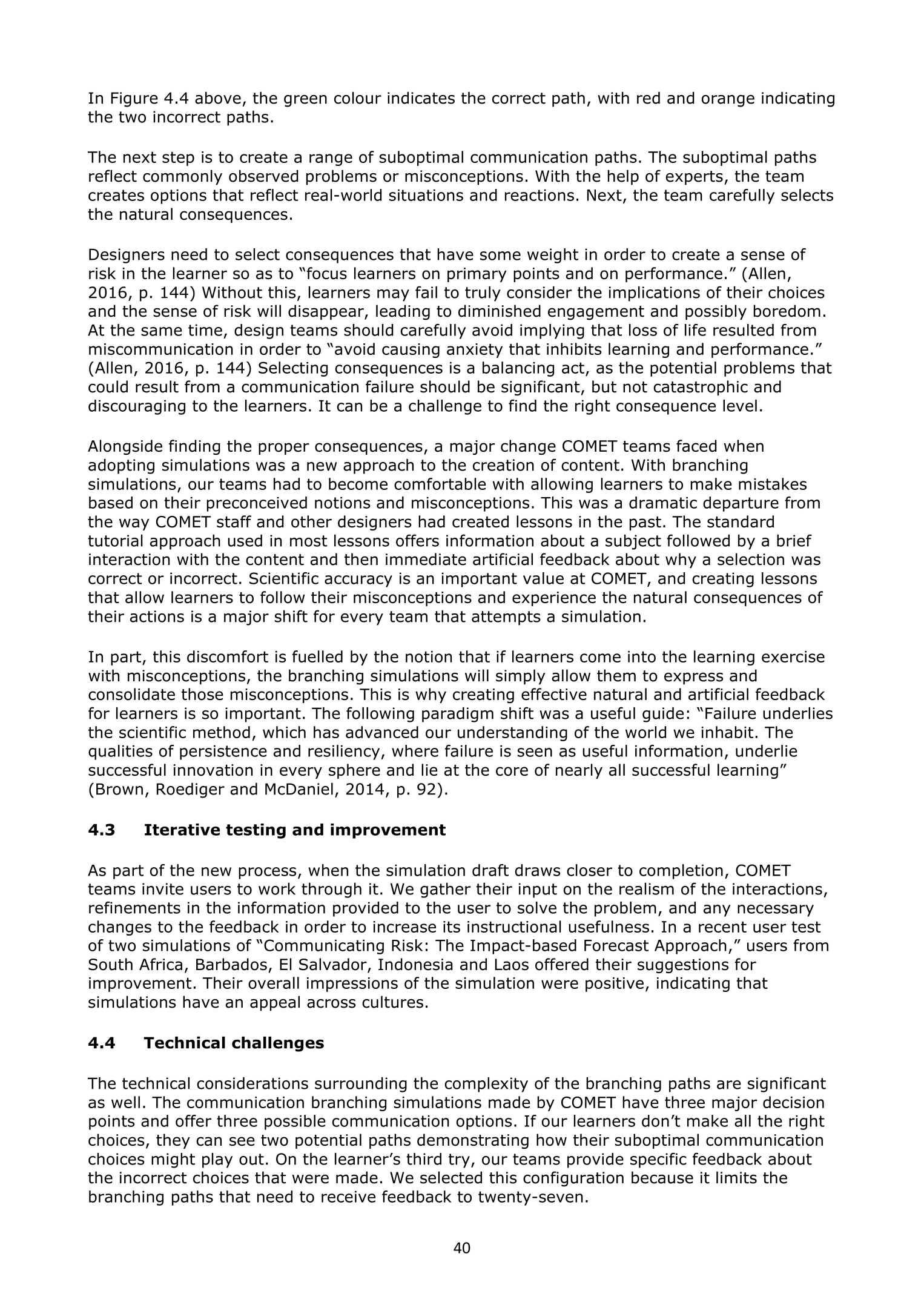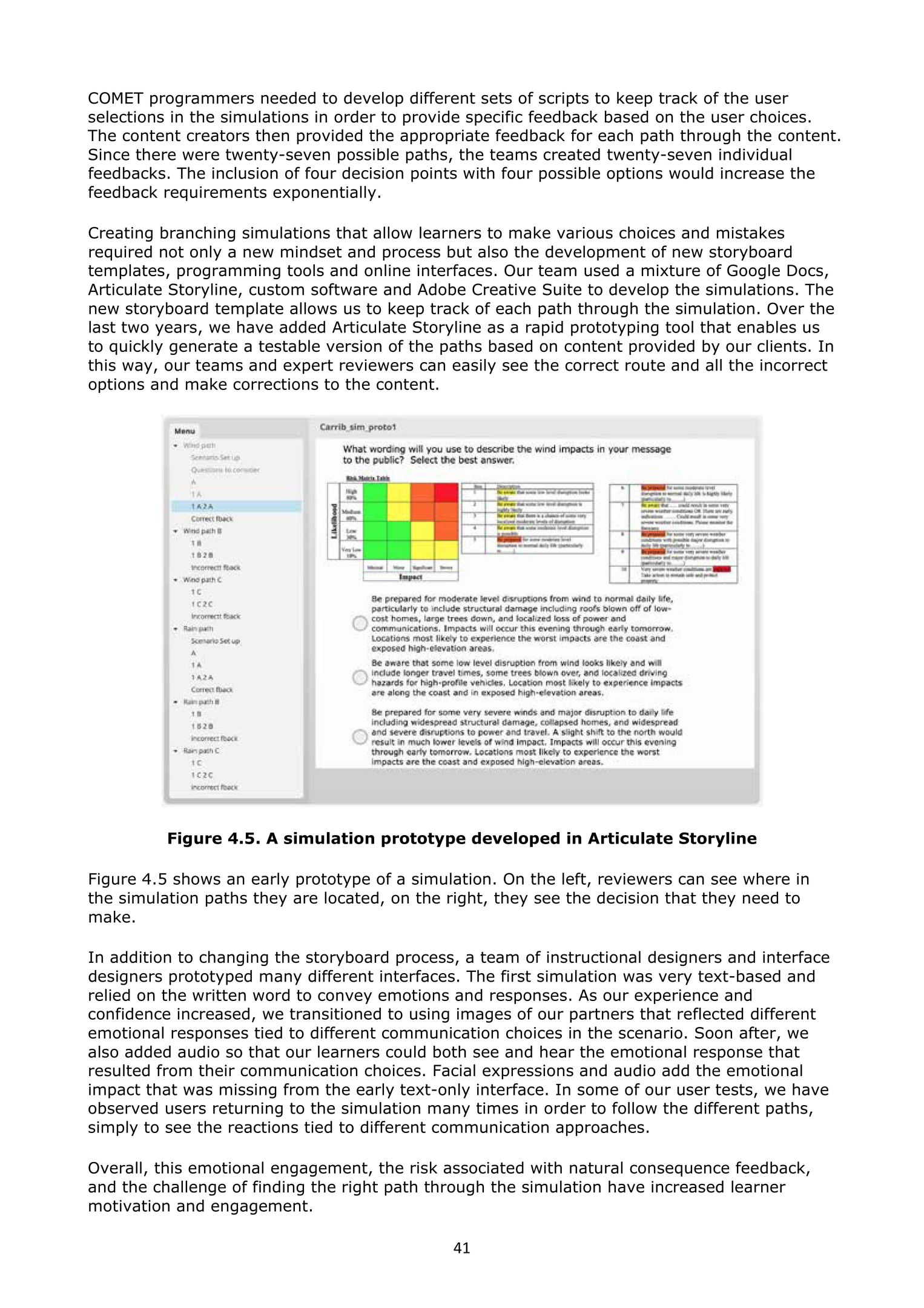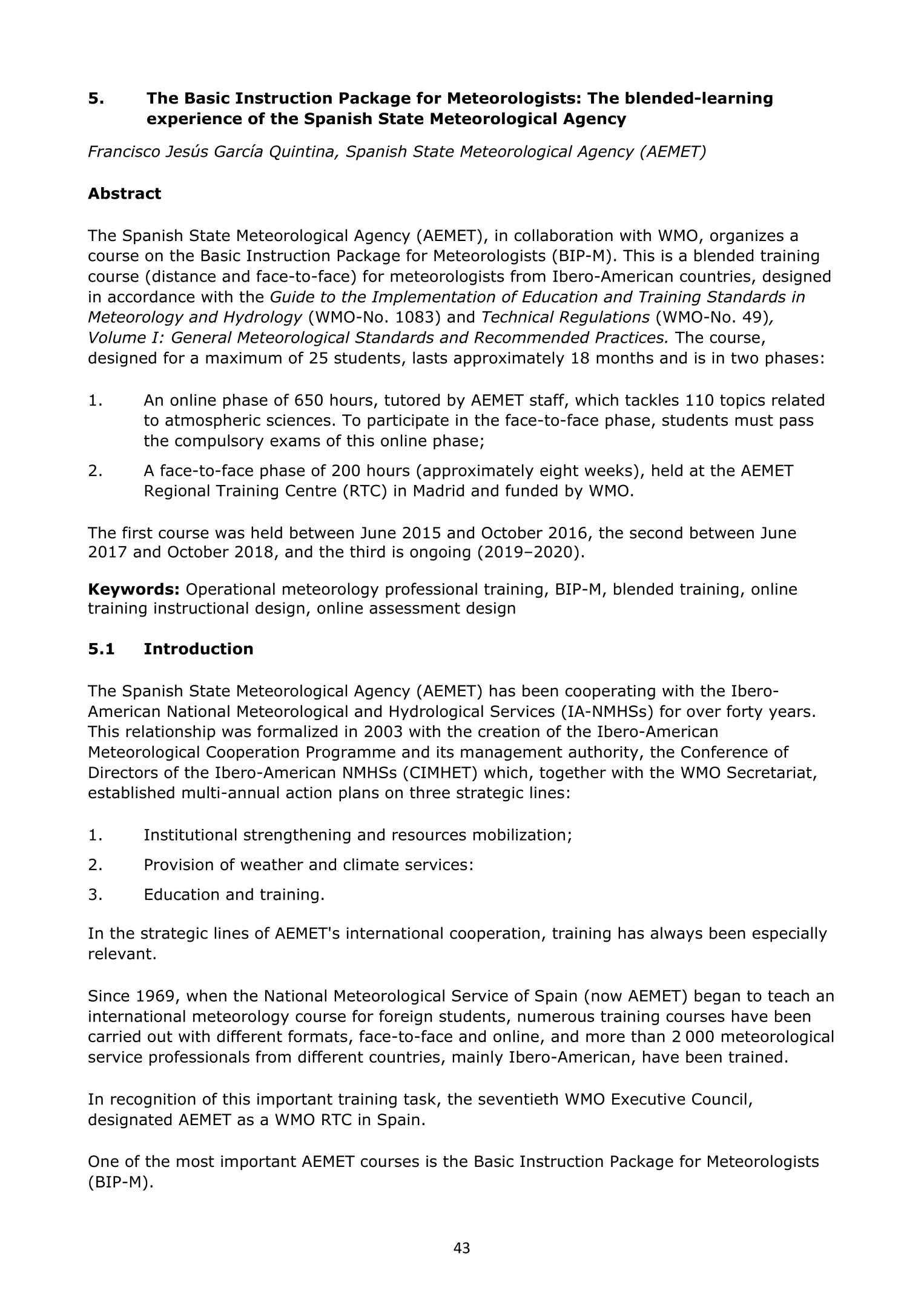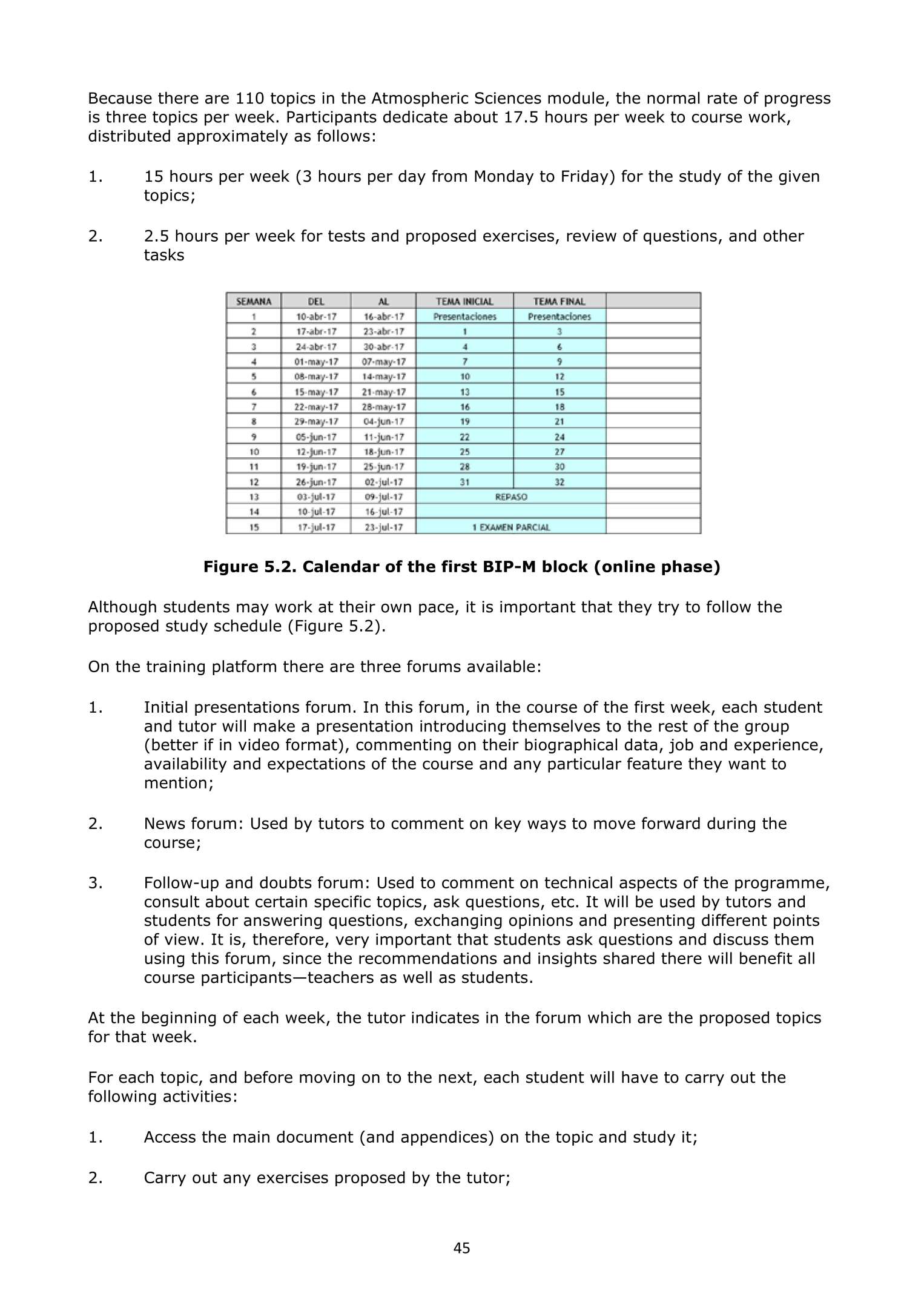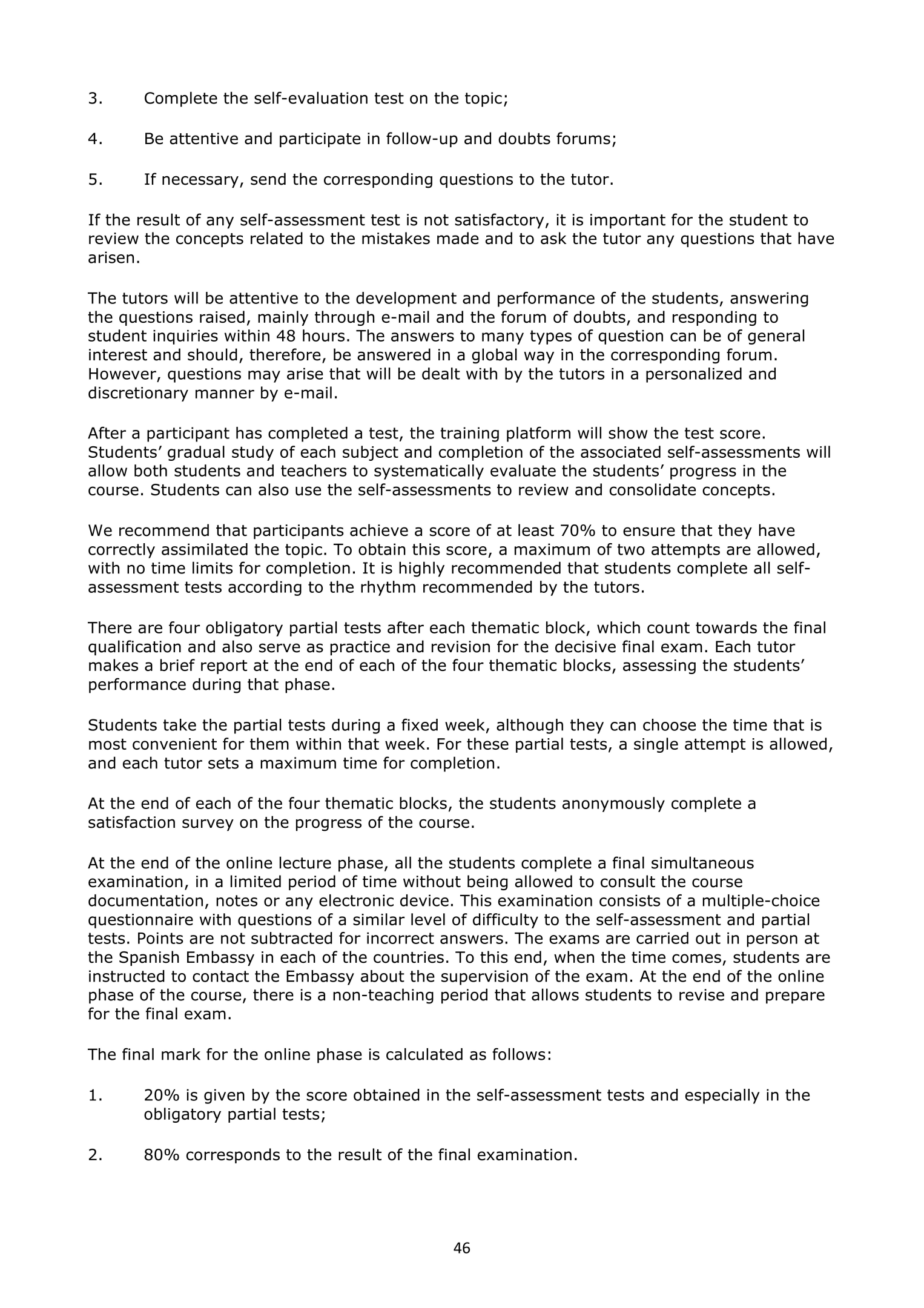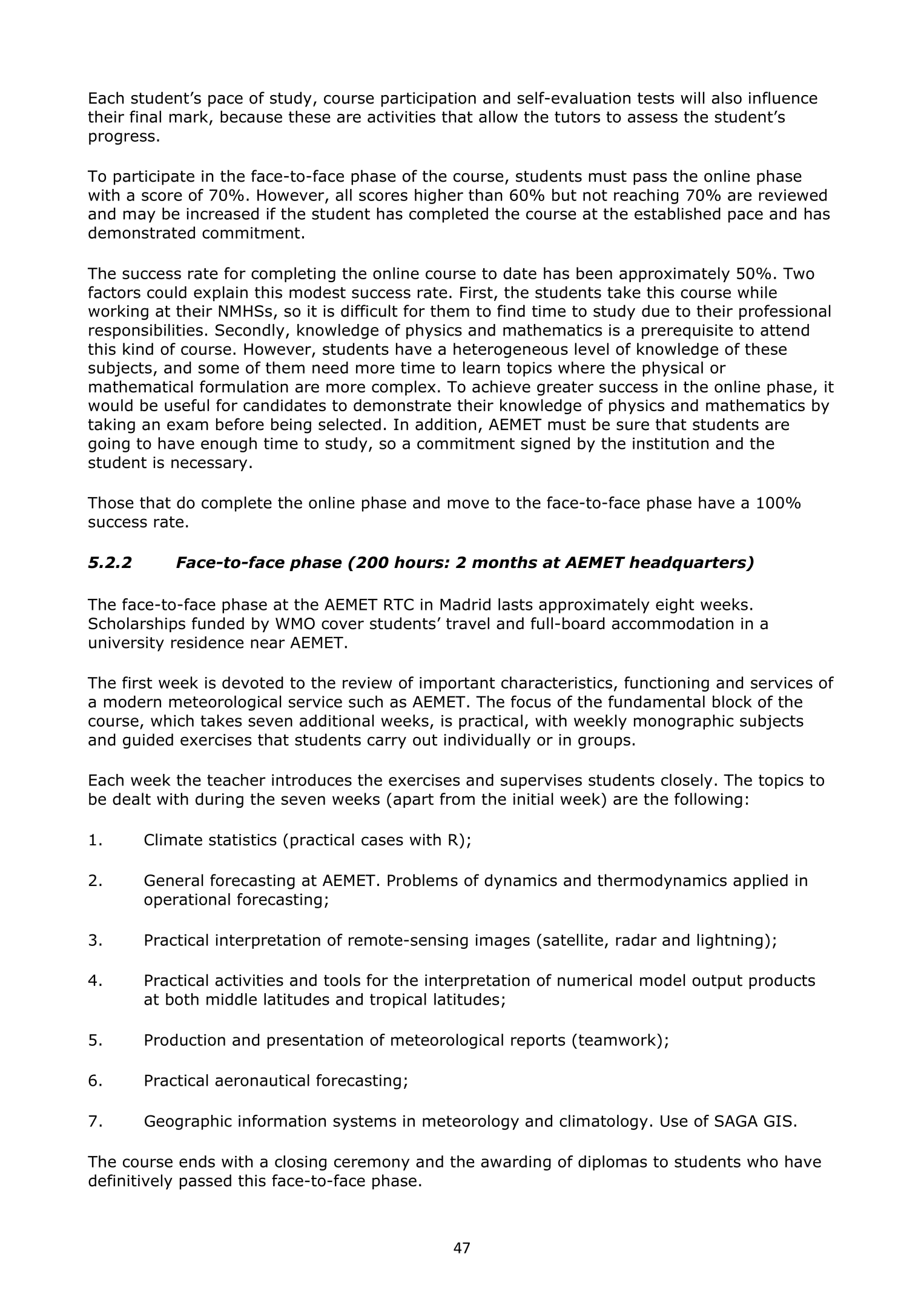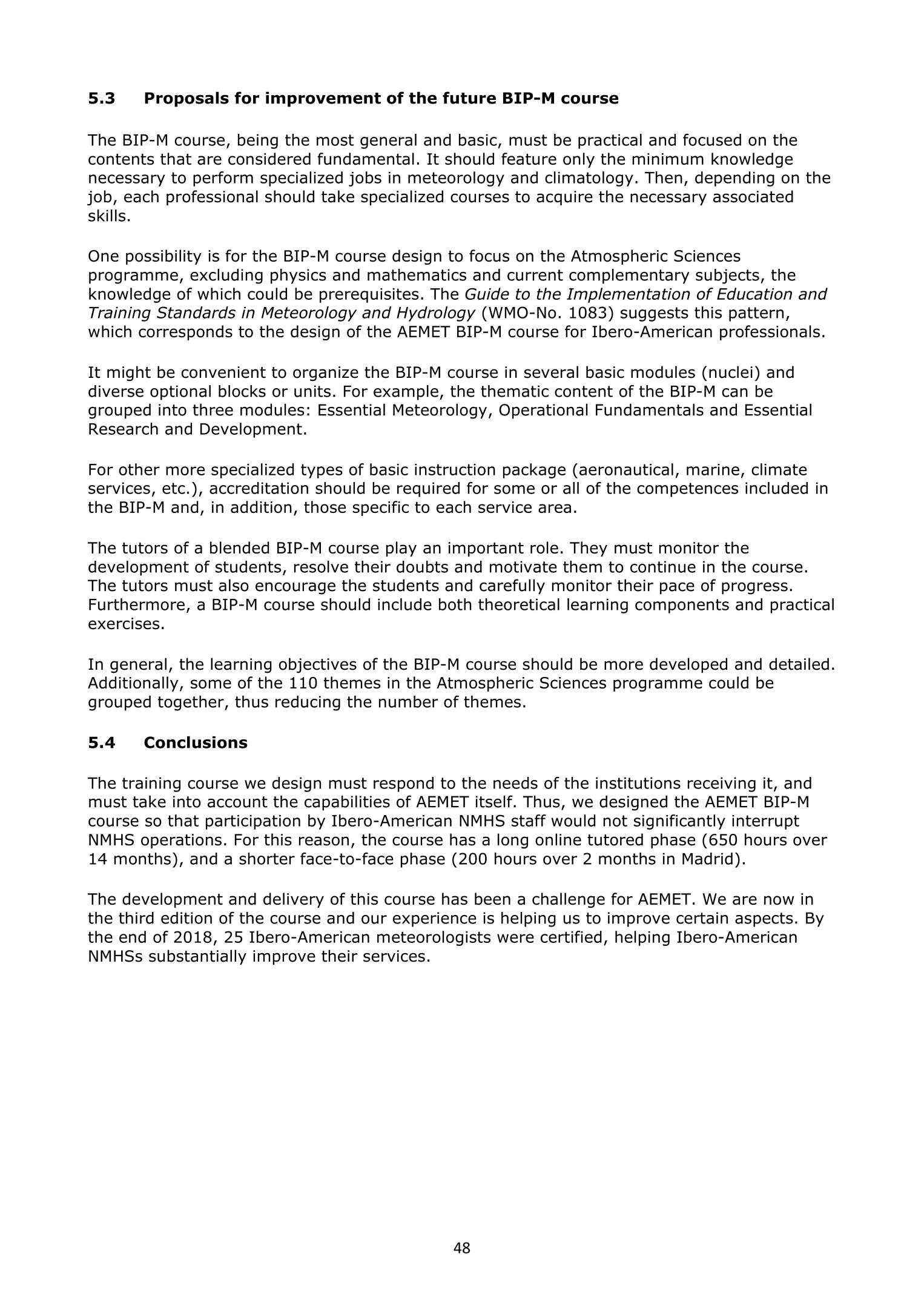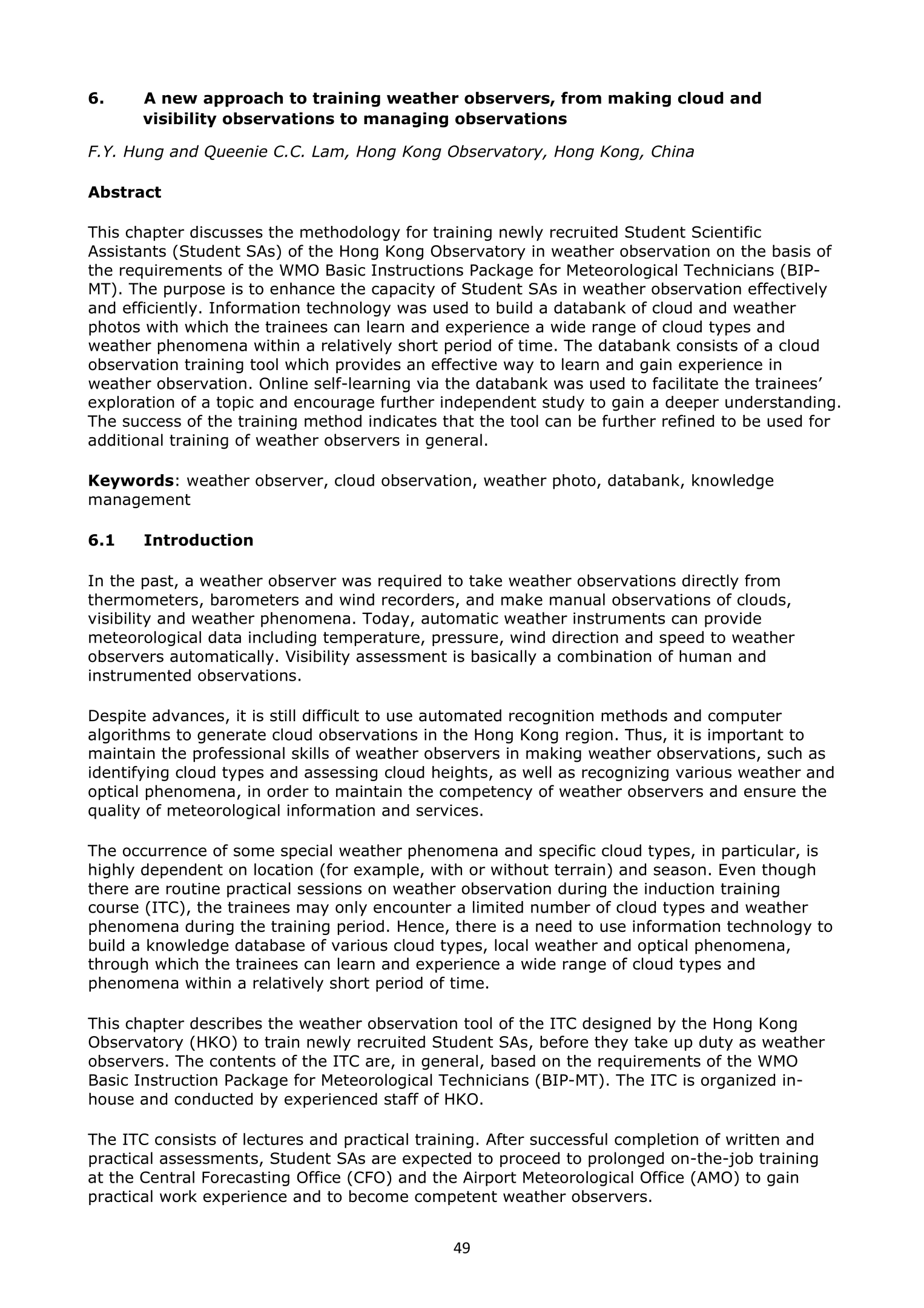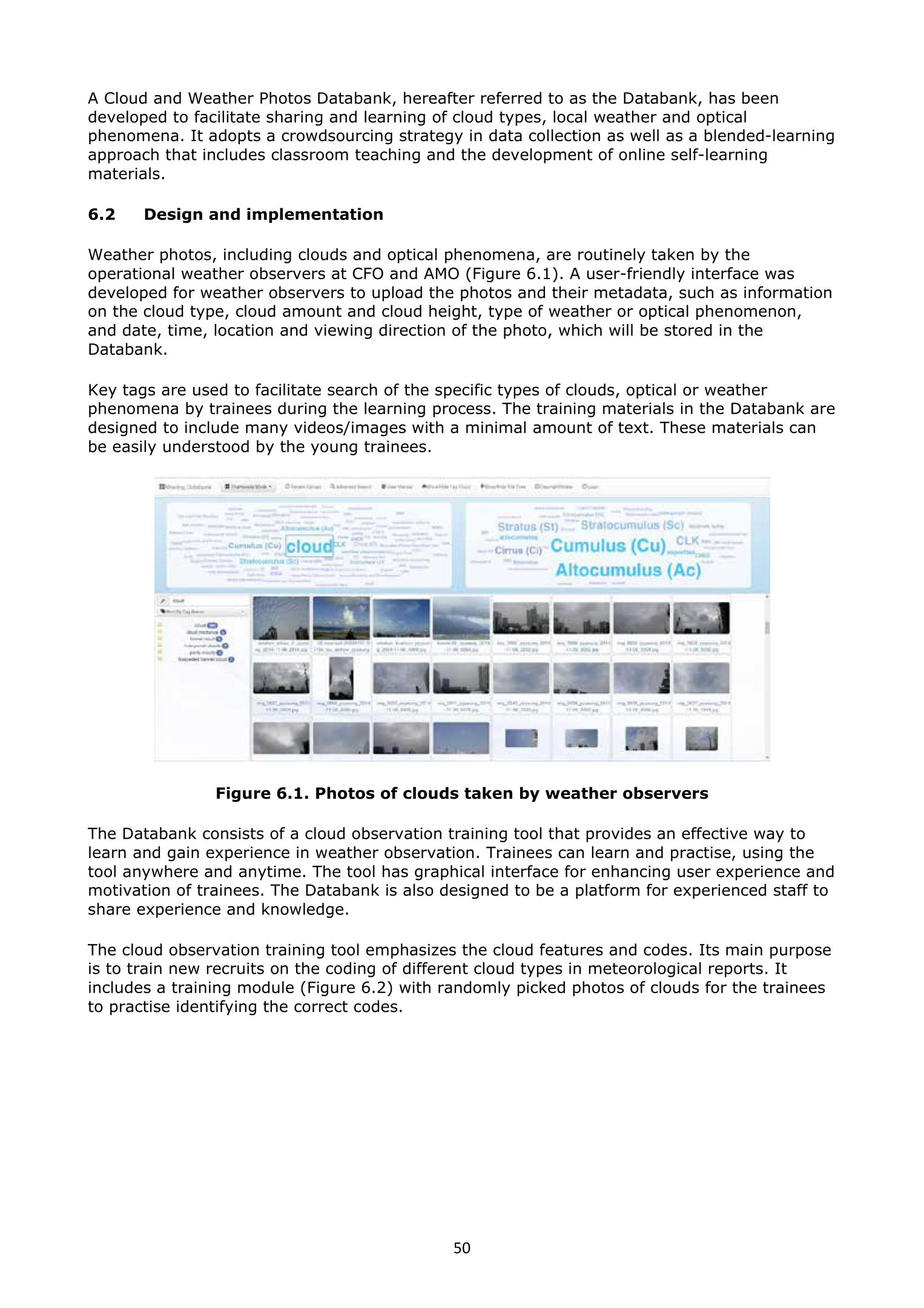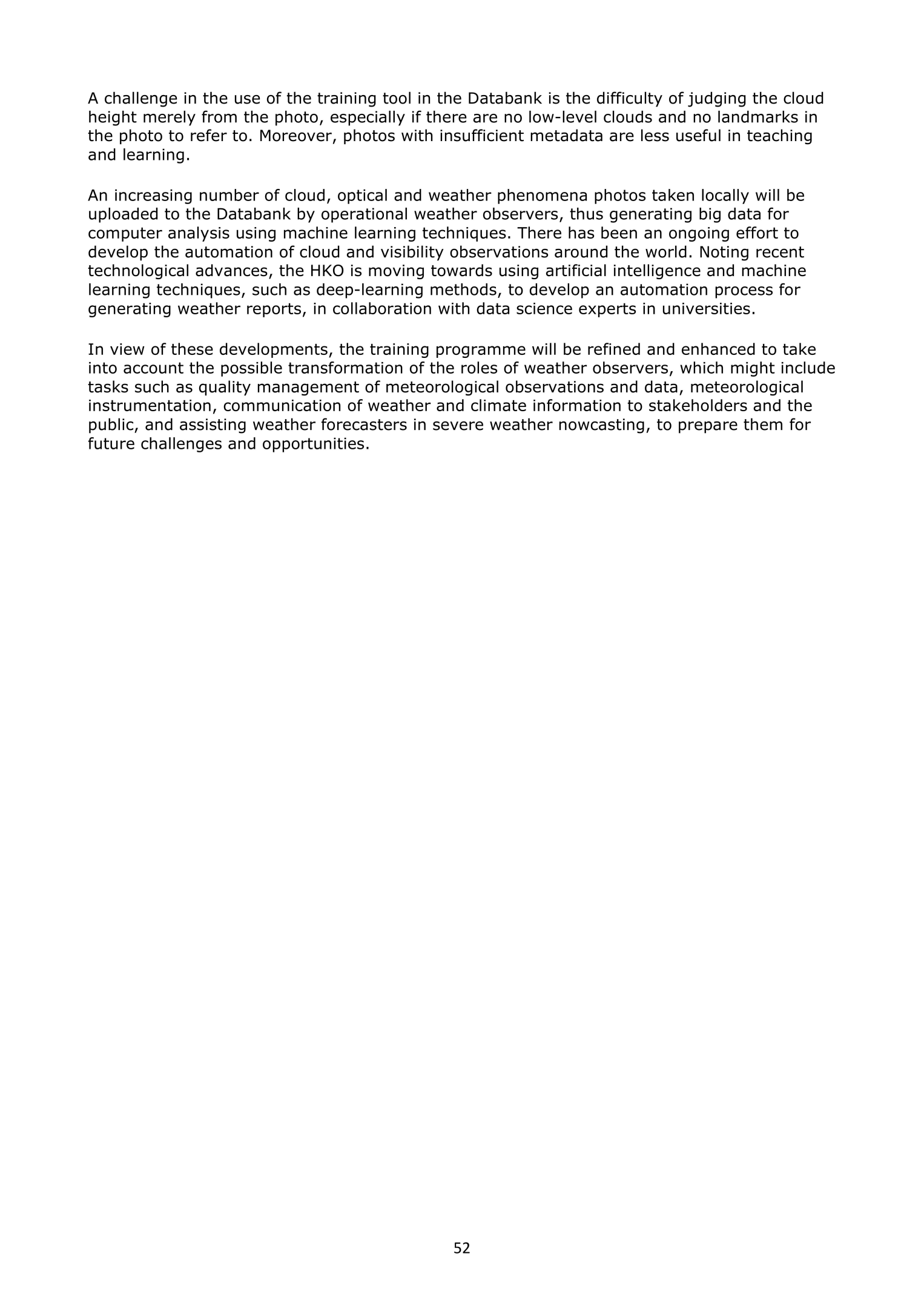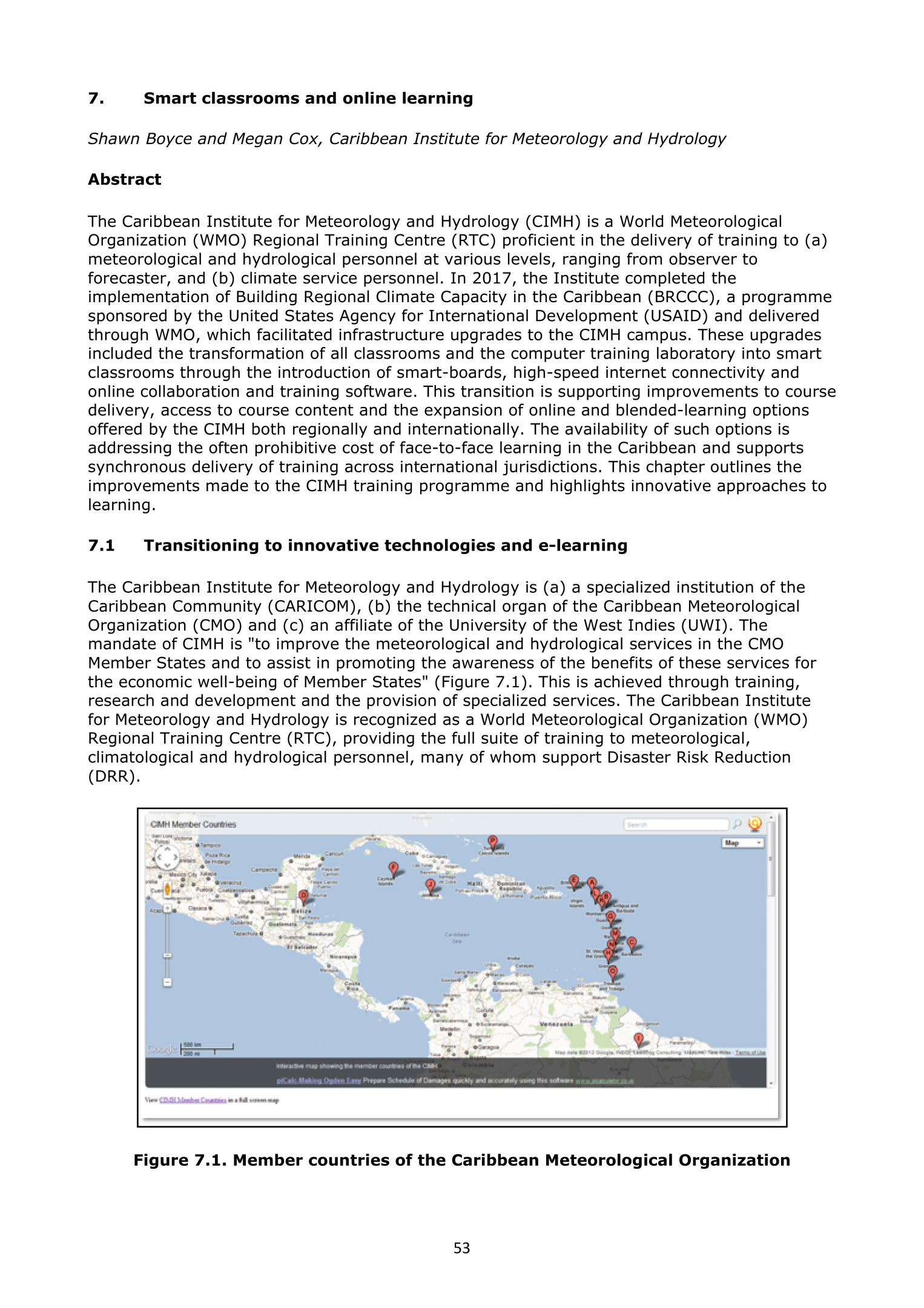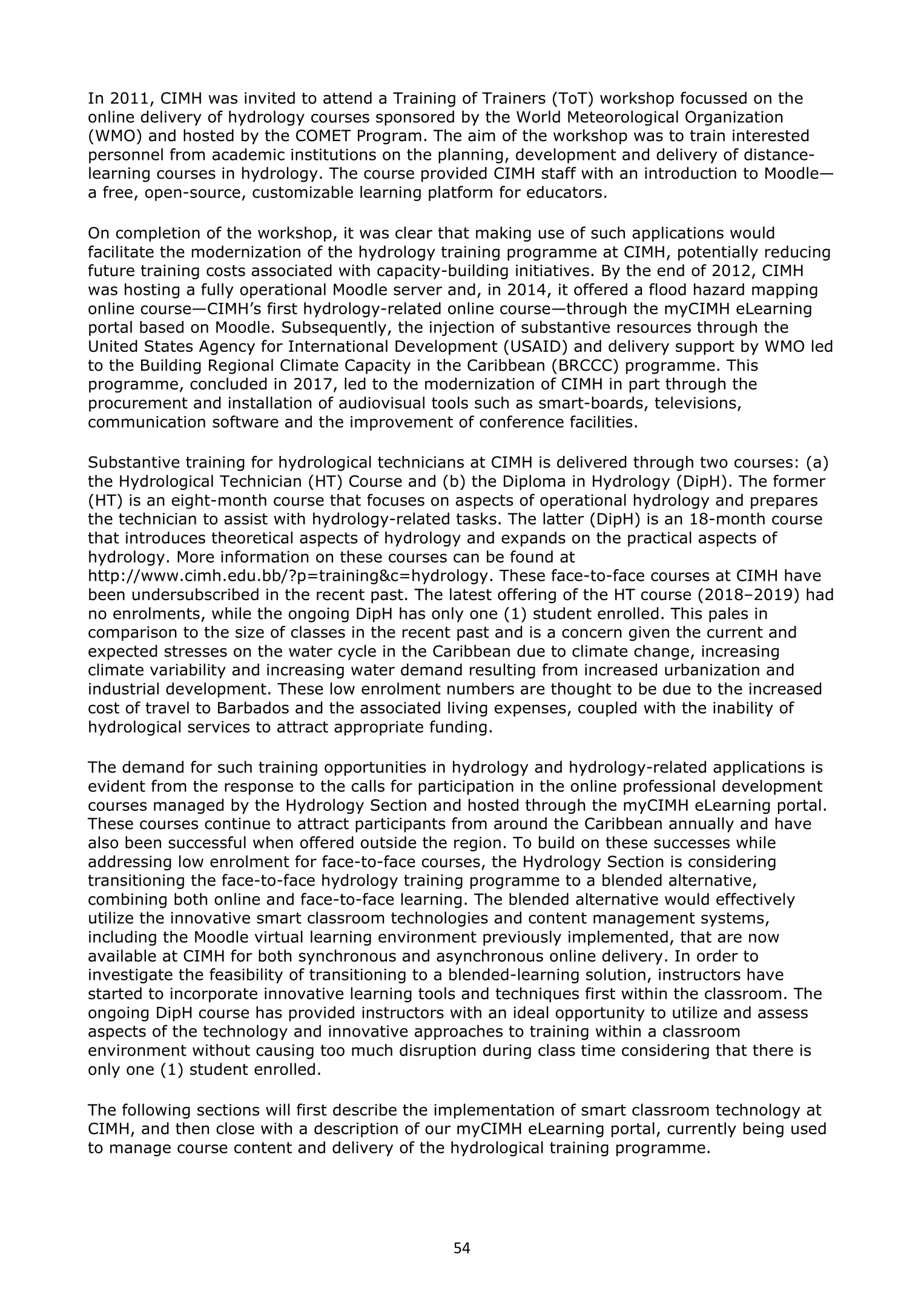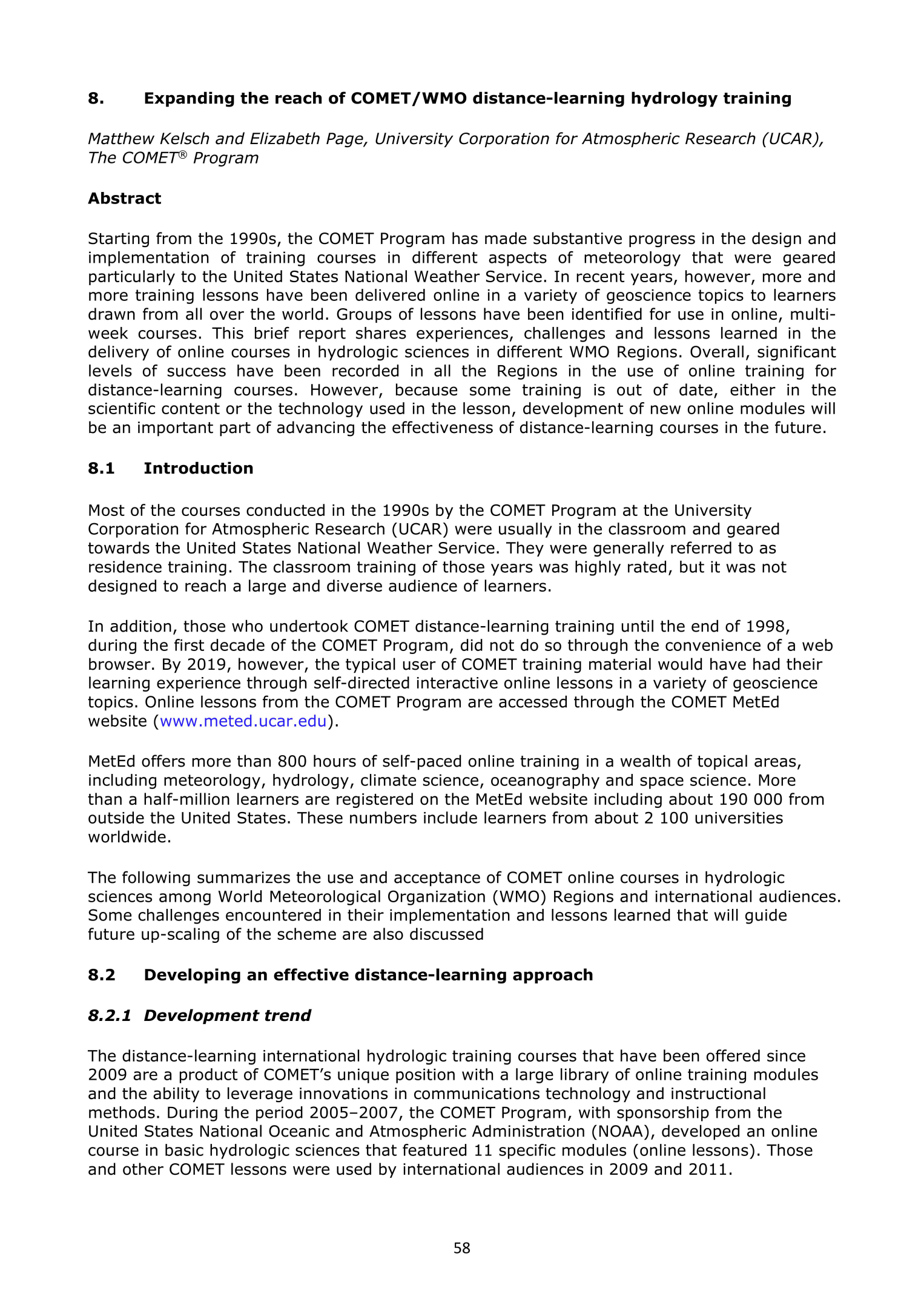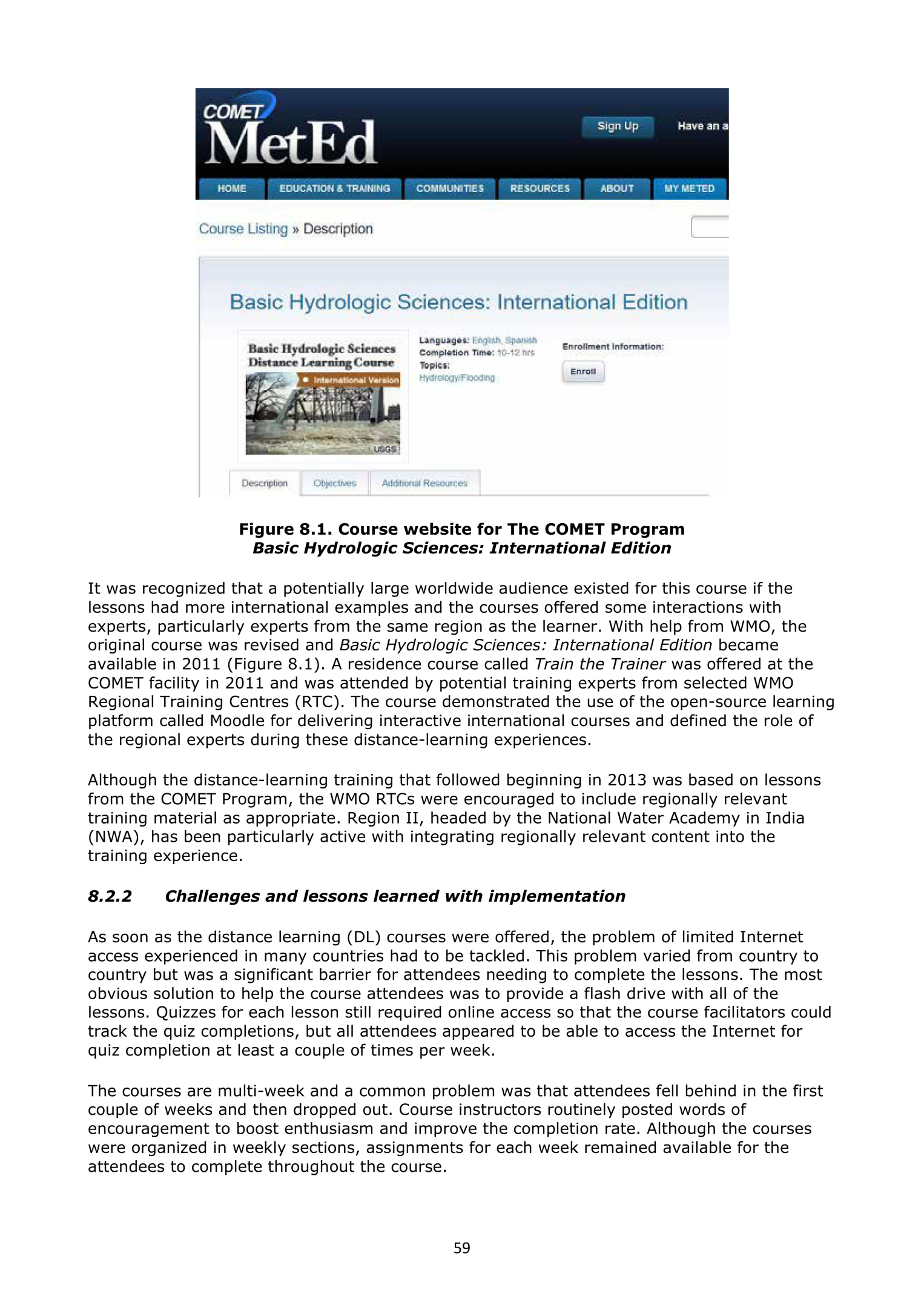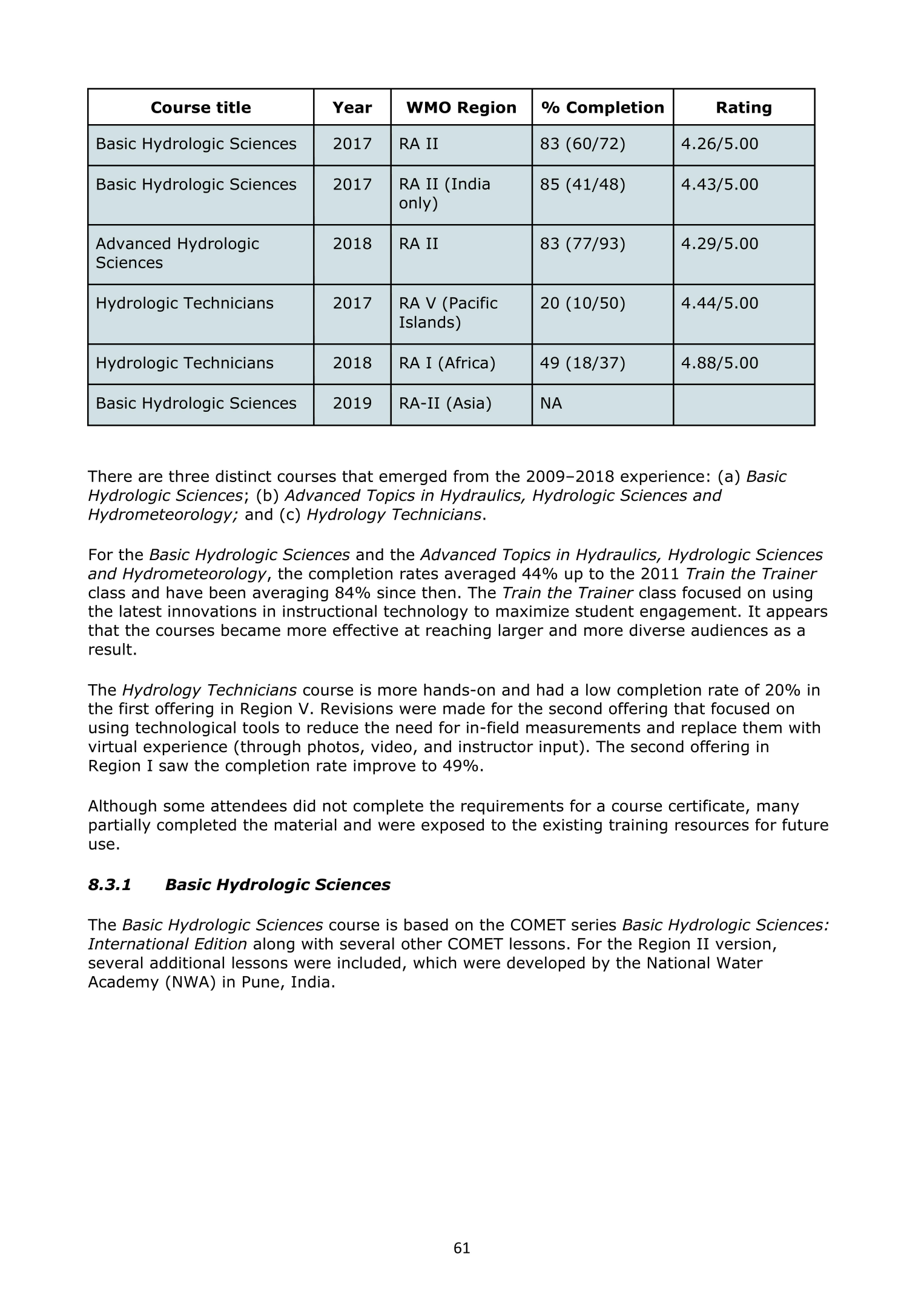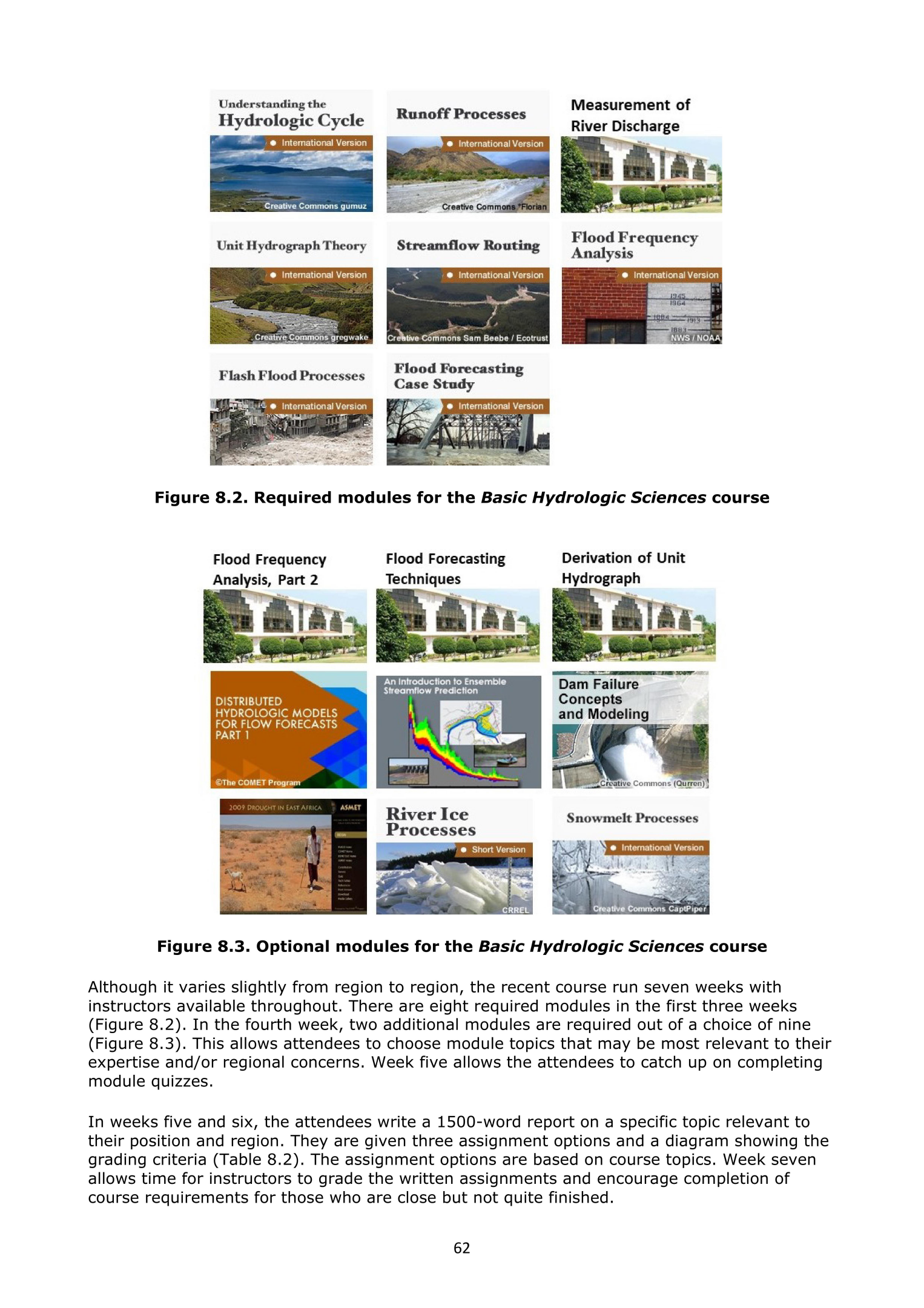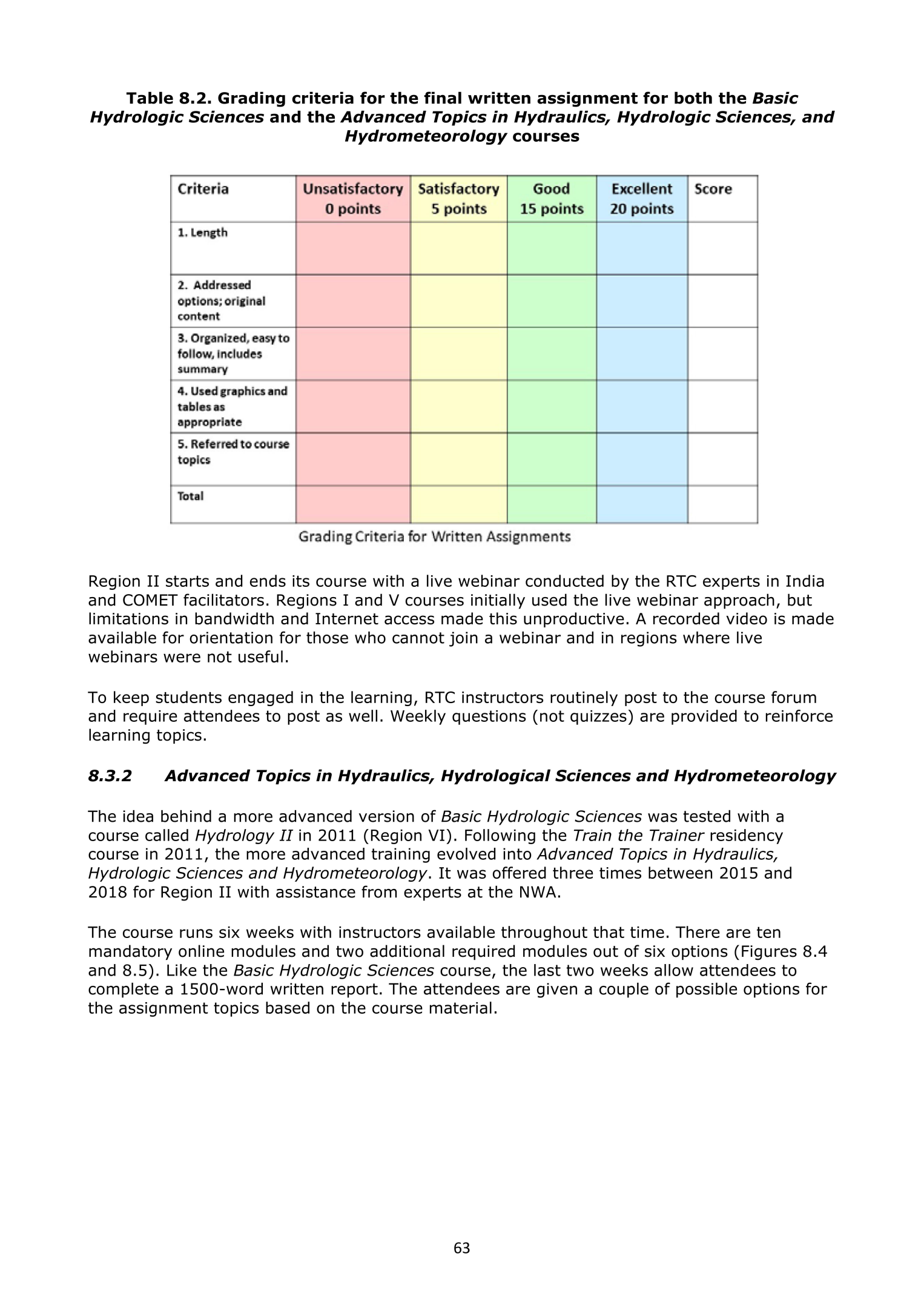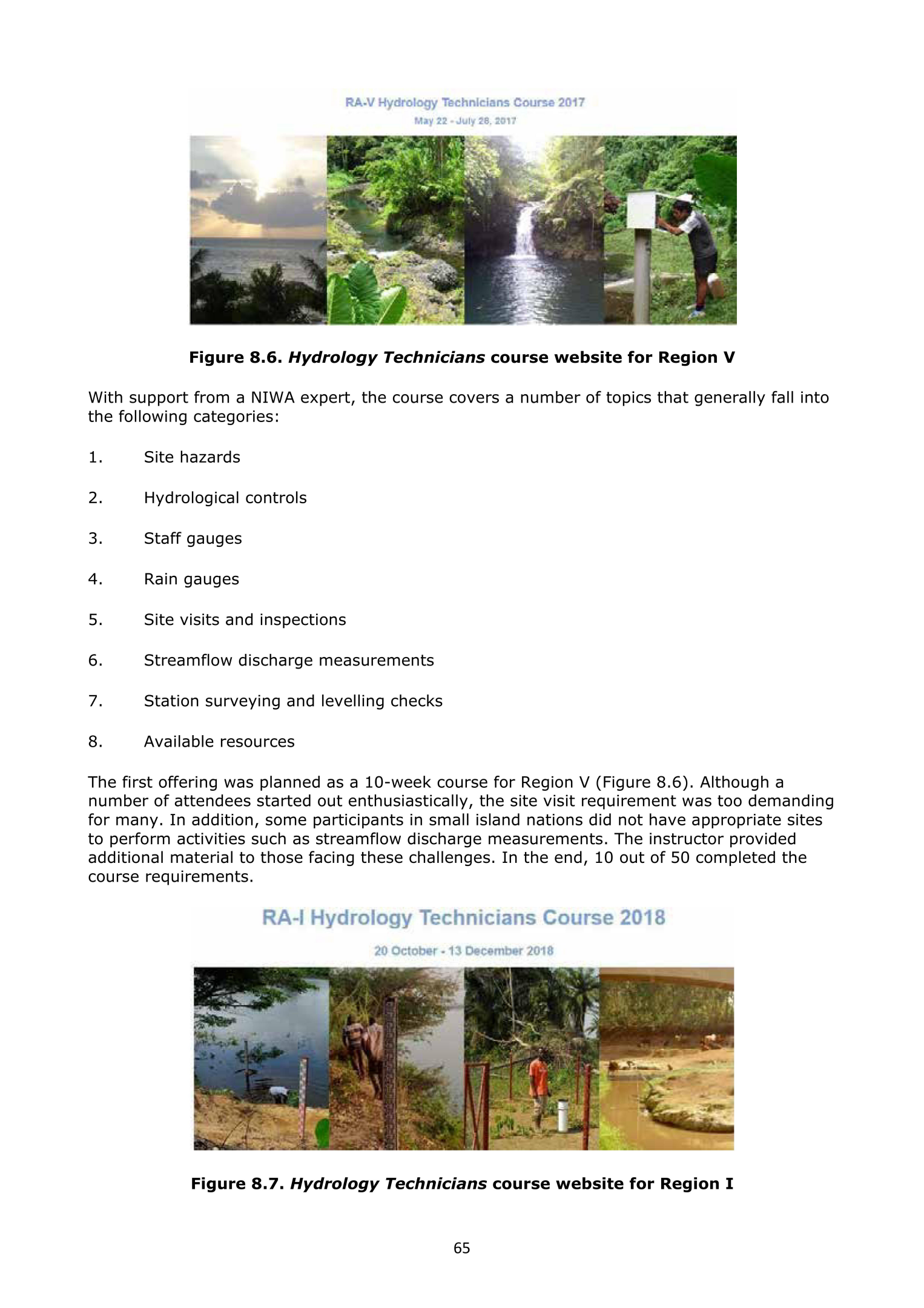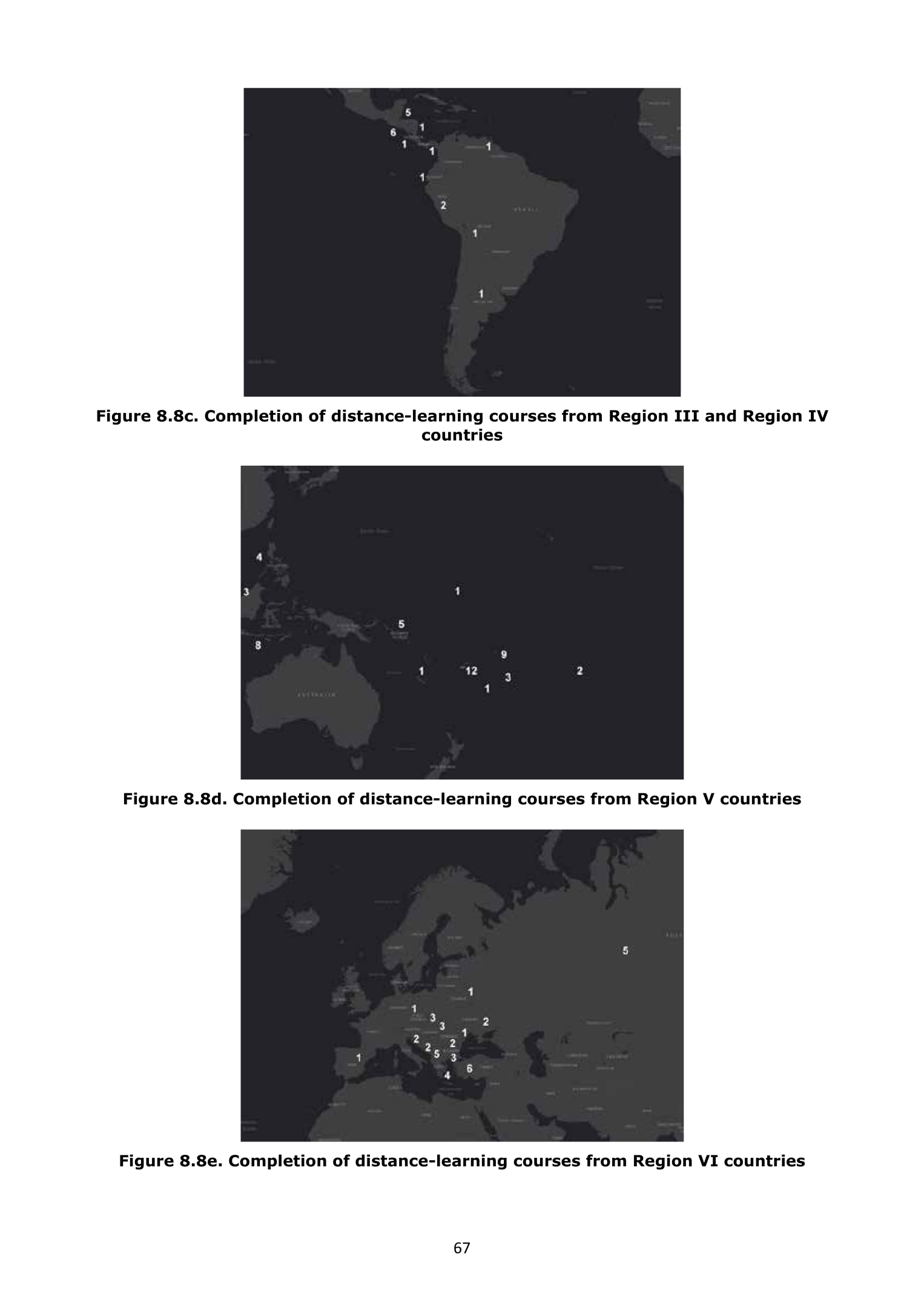PDF
- Umnov et al. provide a detailed description of a multi-faceted technology and its pedagogical implementation through software and hardware systems to develop personal learning environments, and an account of designing Internet of Things applications, particularly in weather-related information for decision- making.
- ter Pelkwijk et al. tell the story of international collaboration in the development of tools for creating and running instructional simulations for weather forecasters, the ultimate in learning-by-doing applications for this group.
- Kung and Lam describe how the Hong Kong Observatory uses weather simulations for practical training, for self-assessment of competencies, and for creating a library of severe weather cases as a knowledge management repository.
- Ross-Lazarov and Mancus add another level of complexity to instructional simulations by building branching simulations, with incremental feedback to guide, but not constrain learners to one path, so they can also experience the natural consequences of their decisions (and learn from their mistakes).
- Quintana describes the AEMET approach to delivering a complete, blended-learning BIPM package, using distance -learning tools for a 12-month, active online learning experience that precedes a two-month practical experience on site in Madrid.
- Hung and Lam share their innovative tool for game-based learning and knowledge management on cloud and visibility identification, engaging the entire organization in developing a databank to serve these purposes.
- Boyce and Cox describe the implementation of smart classroom technologies that can enhance the learning experience for both classroom and online students simultaneously and facilitate the transition to online teaching. 8. Kelsch and Page describe their work with WMO to deliver online hydrology training using well-designed, self-directed online resources in a structured, teacher-facilitated event that takes place over multiple weeks.

